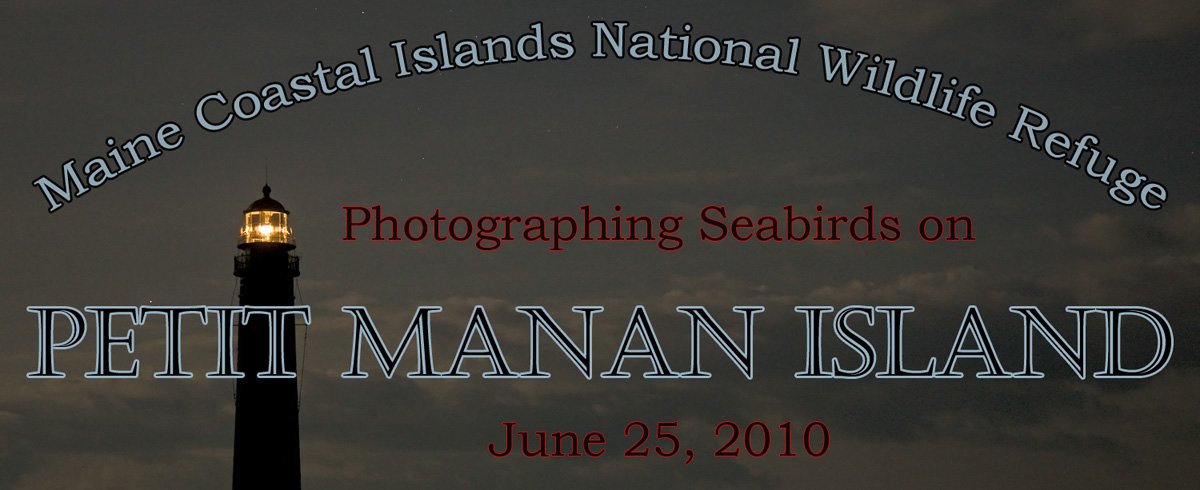
|
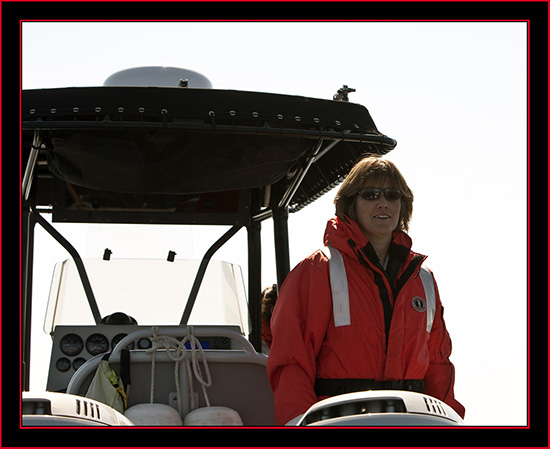
|
In the most recent email exchange we discussed a timeline. Wednesday and Thursday had a projection for rain – Friday, June 25th was the date settled upon. Linda did ask
if I’d prefer to reschedule so we could do more than a single day – maybe stay overnight or visit several islands in one trip. Milbridge is over 3 1/2 hours from Portland when
making the drive - time consuming for one day. Looking ahead I knew my schedule would accommodate the Friday selected – I was good to go and indicated I would drive to Milbridge Thursday
evening, stay in a hotel and be at her office at 0730 the next morning…
Linda Welch, U.S. Fish & Wildlife Service Biologist, Maine Coastal Islands National Wildlife RefugeCanon EOS Mark III 1Ds, 1/1000 second at 70mm; EF70~200mm f/2.8L at f/11, ISO 320 |
|
After work on Thursday I sorted my camera equipment and made last minute changes to what I would take to the island. Having done this previously I had a much better
idea of what I could transport - this time shouldn’t prove as difficult. The Eider round-up consisted of a much larger crew involvement than this trip would
entail. I packed three cameras, two full, one sub-frame, a lens group consisting of five lenses, my Gitzo 5530 tripod with a Wimberley II head, dedicated for the 600mm f/4L lens & a Gitzo G1325 set up with a with a
Really Right Stuff BH-55LR ballhead. I packed a camera bag with accessories including a 580EX
Speedlight which I use with a Better Beamer flash extender, a second 580EX II Speedlight, compact flash cards, spare camera batteries, batteries for the
flashes, electronic cable release and some other gear. All this was sorted and in some instances placed in hard cases. When I got to Milbridge everything would
end up packed in dry bags for the trip to the island. I checked and re-checked the equipment , loaded the gear in my truck and headed up the coast…
I arrived in Milbridge before the hotel office closed. Milbridge, a small town in Washington County, has a population of around 1,300 and would be considered quaint by those ‘from away’ - I enjoyed being here. I drove around town some and walked the hotel grounds with the remaining daylight available just in case I viewed a scene I wanted to photograph in the morning. The Red Barn Restaurant and Hotel where I stayed is really close to the FWS office. This was okay with me - I wanted to be rested for the next day and this would provide some extra time. I truly enjoyed the evening, it was quiet and the hotel was pleasant. I recall thinking that I could do more of this if Linda provided more island opportunities in future. Loading/unloading the Boat - Maine Coastal Islands National Wildlife RefugeCanon EOS 1Ds Mark III, 1/800 second at 70mm; EF 70~200mm f/2.8L at f/10, ISO 640 |
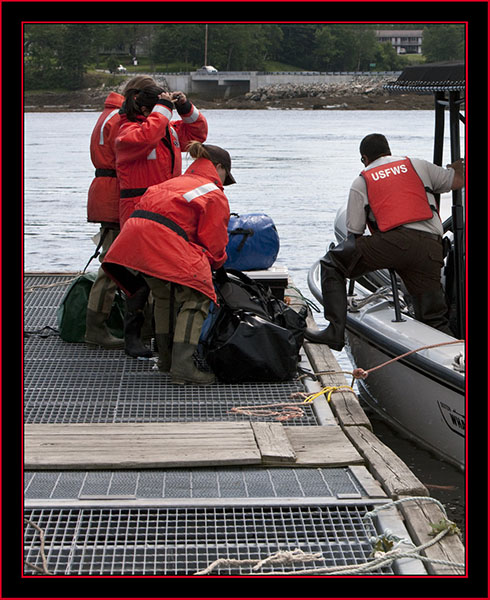
|
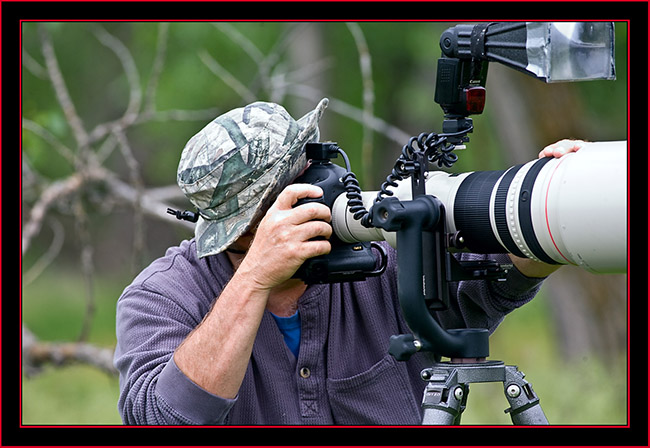
|
I knew from speaking with the the desk clerk there was a restaurant nearby opening at 0600 hours. I was concerned about oversleeping but in reality didn’t believe there was much chance this would happen. Just in
case I had my Linda in Portland call me at 0600 to make certain I was up. She did call but I was up at 0500, showered, shaved and ready for the day. I had a nice breakfast at
the restaurant which actually opened the doors fifteen minutes early and went back to the hotel for awhile. I met a cat in the parking area upon my return and reached down
to give it a stroke. I think I was instantly adopted as the cat stayed around and followed me everywhere as I loaded up. When I opened the cap to load my gear the cat jumped in the back to
explore. When I opened the door to the cab, the cat jumped on the seat ready to go. When I went in the room the cat followed eventually jumping on the bed and getting
comfortable. Once ready to depart the cat was still sprawled on the bed checking me out. I opened the screen door to the back yard area and the cat, thinking I was going
outside, followed. Once outside I closed the door and locked it up – the cat was still looking, waiting for me to come out – I almost felt guilty… Afterwards I fueled up
my truck and drove around Milbridge enjoying the morning. I got to the office after a time and while waiting sorted my gear in preparation for the staff to arrive and start
their day. I never did take any photographs in the pre-trip hours – I didn’t want to unpack the cameras just yet…
Kiro in the Field - North Platte, Nebraska, June 2010Canon EOS 5d, 1/320 second at 400mm; EF400mm f/5.6L at f/6.3, ISO 800; taken by my friend Corey Stone |

|
Black Guillemot Flight - Maine Coastal Islands National Wildlife Refuge
Canon EOS Mark III 1Ds, 1/1250 second at 200mm; EF70~200mm f/2.8L at f/8, ISO 640
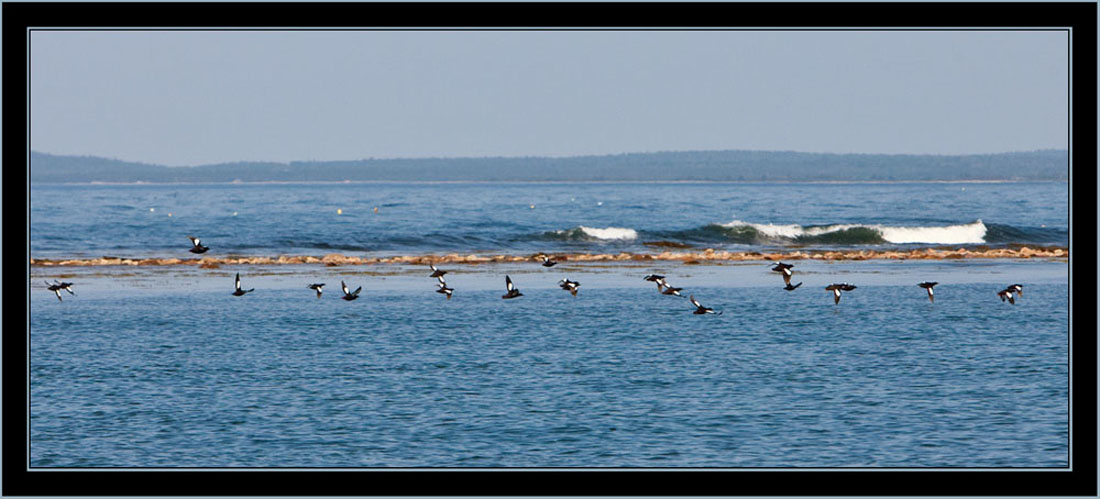
|
The office came alive before 0800 as the staff arrived. Linda drove in with a completed grocery order to carry out for the seasonal technicians and we unloaded her vehicle. Jim Fortier had been the first to
arrive – no surprise to me –and he and I became reacquainted. It was great to see him again. I’d mailed him some photographic prints to serve as Christmas gifts last year and he indicated they were well
received by his friends and family. I also had an opportunity to speak with Steve Agius who I’d met during the Eider Round-up. Steve had been really helpful to me on that trip and I made a point of thanking
him again and learned he wouldn’t be going out with us today as he had duties elsewhere. I felt much more like one of the crew this time around – Jim & Linda must have thought so as well – they put me to work in
loading and other preparations, tasks I was more than pleased to assist with. We loaded the vehicles and boat and we soon underway…
View From the Water - a Maine Coastal Islands National Wildlife Refuge IslandCanon EOS 1Ds Mark III, 1/800 second at 185mm; EF 70~200mm f/2.8L at f/6.3, ISO 640 |
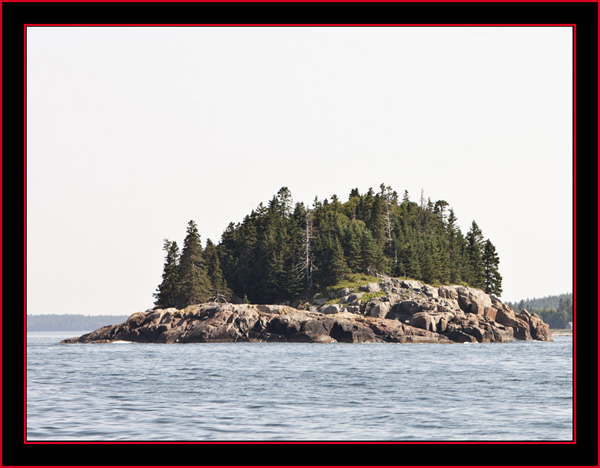
|
Composite Image with Petit Manan Lighthouse in the Distance - Maine Coastal Islands National Wildlife Refuge
Canon EOS Mark III 1Ds, 1/1000 second at 70mm; EF70~200mm f/2.8L at f/11, ISO 640
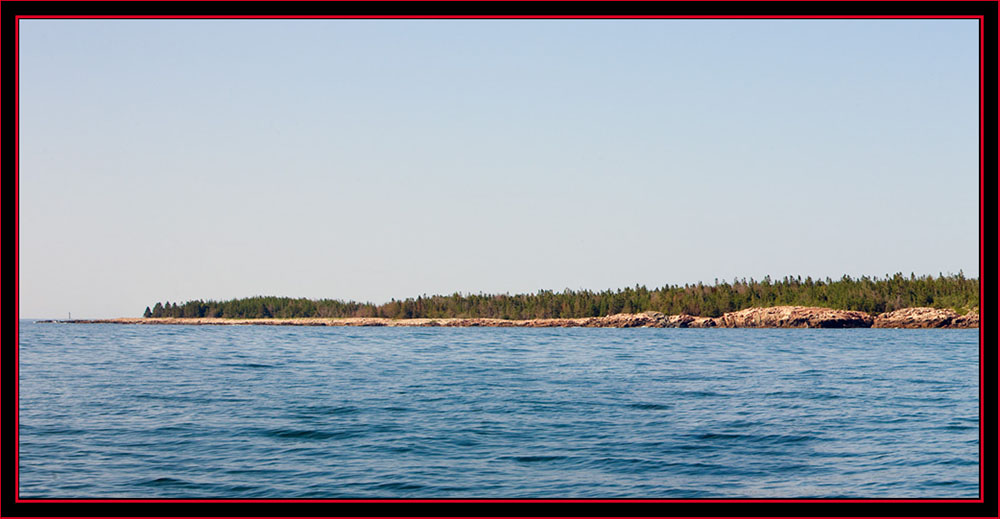
|
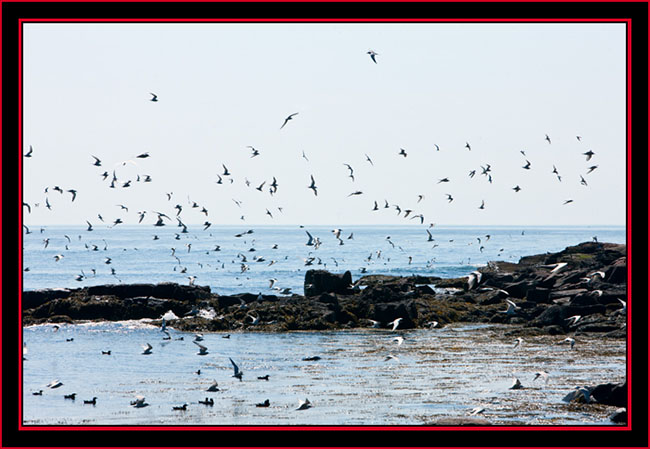
|
As we approached the island I could see birds everywhere. Wow – this is going to be great… I had a 70~200 lens on a camera hanging on a strap available. Everything else was packed and protected for the
transit. I took some shots as Jim slowed the boat on the approach.
Seabirds Around PMI - Maine Coastal Islands National Wildlife RefugeCanon EOS Mark III 1Ds, 1/1000 second at 200mm; EF70~200mm f/2.8L at f/13, ISO 640 |
Petit Manan Island - Maine Coastal Islands National Wildlife Refuge
Canon EOS Mark III 1Ds, 1/1000 second at 70mm; EF70~200mm f/2.8L at f/11, ISO 640
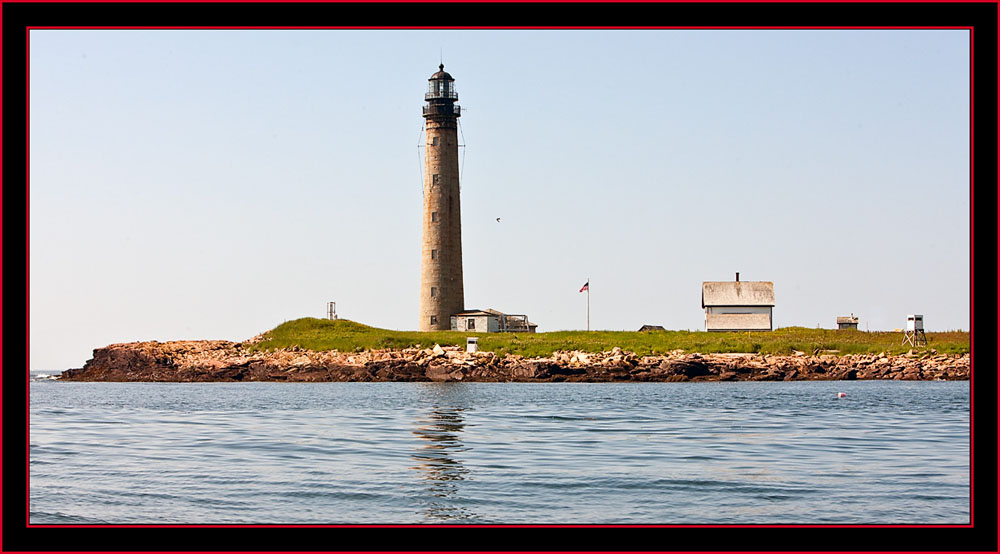
|
|
Linda indicated I’d be the first to go ashore in the inflatable. The reasons for this was twofold as far as I could tell – one because I was a guest, the second was so I could photograph the crew as they unloaded the boat and went about their routines.
Speaking with Jim he mentioned the fiberglass boat was too fragile to approach the wooden runners that serve as a boat slip on the island. He anchored offshore and broke out the inflatable to shuttle people and supplies to the crew waiting on shore. They had these tasks down pat and with great efficiency soon gear was coming ashore and being offloaded by the technicians staying on the island. We all had hip boots on to stay dry. I wasn’t overly concerned about getting wet but I was concerned about keeping the camera I carried out of the water. This didn’t prove to be much of an issue… Jim is expert in these matters and made sure nothing out of the ordinary occurred. Jim on Shuttle Service - Maine Coastal Islands National Wildlife RefugeCanon EOS 1Ds Mark III, 1/800 second at 185mm; EF 70~200mm f/2.8L at f/6.3, ISO 640 |
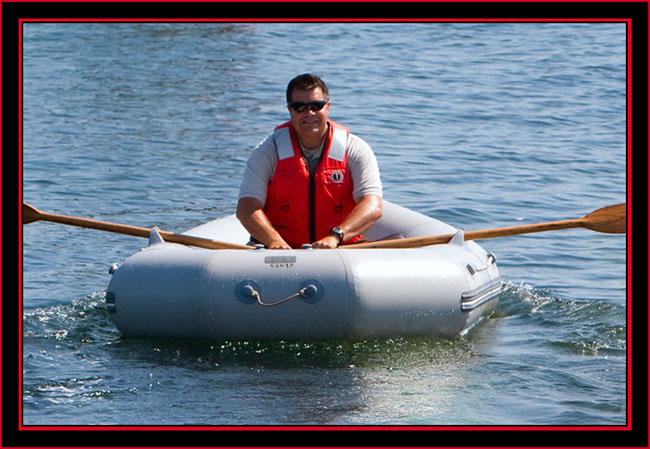
|

|
I pulled the bags containing my equipment up the ramp. The terns started coming after me almost immediately, dive-bombing and scolding at the interruption I represented. Yikes – talk about a target rich environment - this was
outstanding! There was a beautiful Common Tern tending a nest constructed on the boardwalk going up the hill to the buildings. I had one camera available and starting taking exposures as soon as I could swing it up. I jumped down from
the boardwalk to get low and commenced photographing this tern. I took a series of shots lying prone on the walkway creeping closer to the bird all the time. I was completely enthralled with what I was doing & oblivious to what
else was going on. I heard a sound and turned to see one of the island staff who had spoken to me. I had a message from the boat – wasn’t I supposed to be photographing the unloading process? Jim & Linda had realized what I was
up to and wrenched me back to reality… Finding a bird to photograph presented little issue with all the activity around me. I turned my attention to the unloading process…
Common Tern on Nest - Maine Coastal Islands National Wildlife RefugeCanon EOS Mark III 1Ds, 1/320 second at 200mm; EF70~200mm f/2.8L at f/13, ISO 640 |
Coming Ashore & Unloading
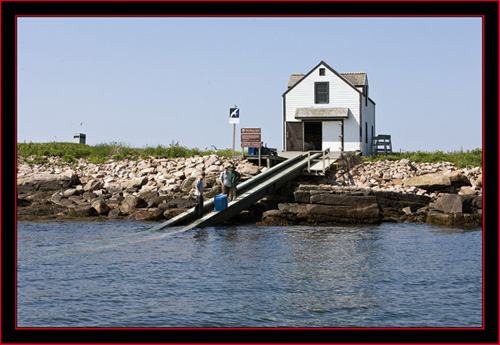
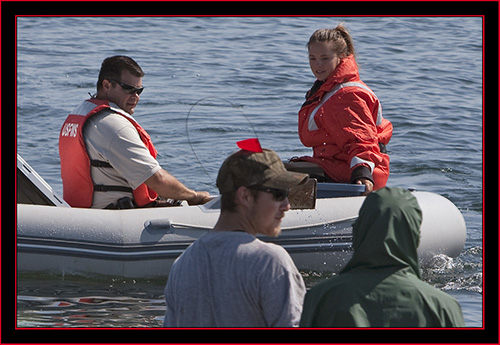
|
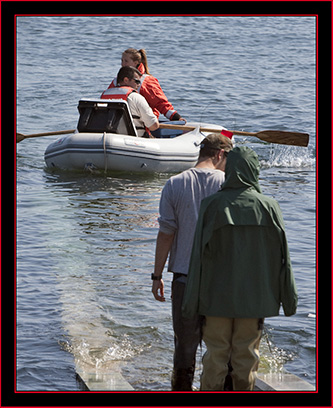
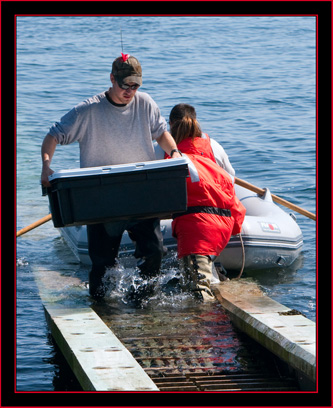
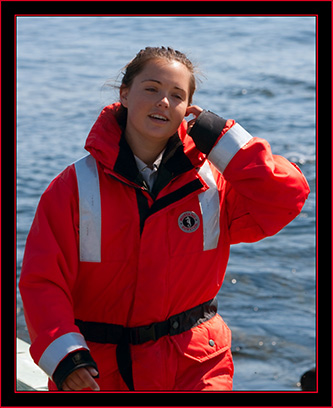
|
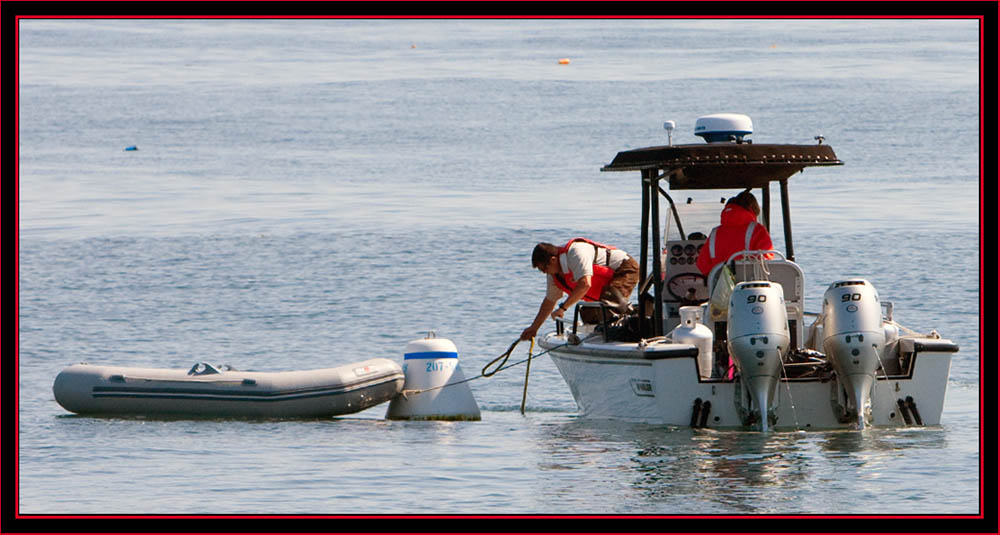
|
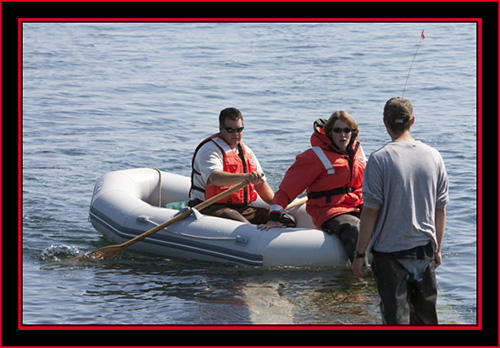
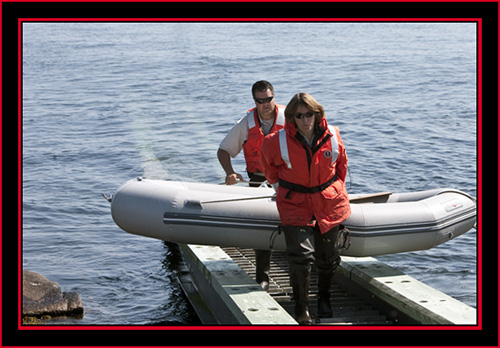
|
|
Once all were on the island and the gear and supplies stowed I went into the boathouse to unpack and set up the tripod system. Linda and Chelsea provided an orientation
as I got things organized. There were eggs everywhere and one had to be careful when walking about. I learned about the flag system employed to identify the tern nesting
sites – blue for Common Terns, red for Arctic Terns, as well as a few others for different species - Black Guillemots & Roseate terns. These flags were evident everywhere
as I looked out over the island.
We discussed where to start and what subjects should comprise the initial photographic effort. There were puffins around but most appeared to be at sea near the island. Linda wished me to photograph terns and guillemots to get started; besides, we were on the portion of the island where Common Terns and Black Guillemots were prevalent. Atlantic Puffins - Maine Coastal Islands National Wildlife RefugeCanon EOS 1Ds Mark III, 1/1250 second at 200mm; EF 70~200mm f/2.8L at f/7.1, ISO 640 |
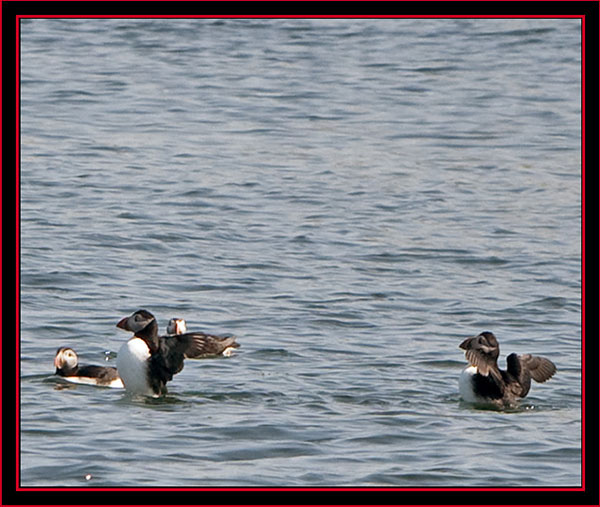
|
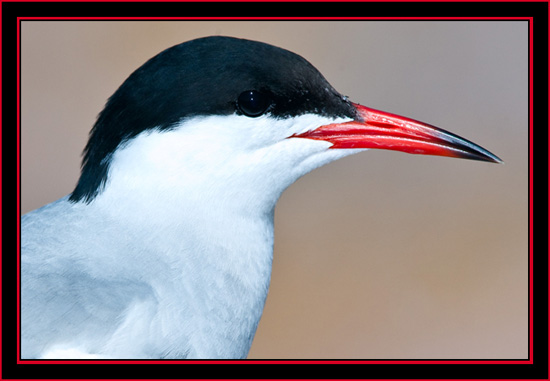
|
Linda explained the simplest means of identifying the birds in breeding plumage – observing the bill color. Common terns have an orange-red bill with a dark tip which
often dissipated with the end of nesting season. Arctic Terns have a smaller, dark blood red bill. Roseate Terns have a thin, all black bill that becomes red at the base
as the summer progresses.
Common Tern in Profile - Maine Coastal Islands National Wildlife RefugeCanon EOS 1Ds Mark III, 1/2500 second at 840mm; EF600mm f/4L + 1.4X at f/8, ISO 640 with Flash |
Arctic & Roseate Terns
Left - Canon EOS 1Ds Mark III, 1/800 second at 840mm; EF600mm f/4L + 1.4X at f/8, ISO 640Right - Canon EOS 1Ds Mark III, 1/3200 second at 840mm; EF600mm f/4L + 1.4X at f/8, ISO 640
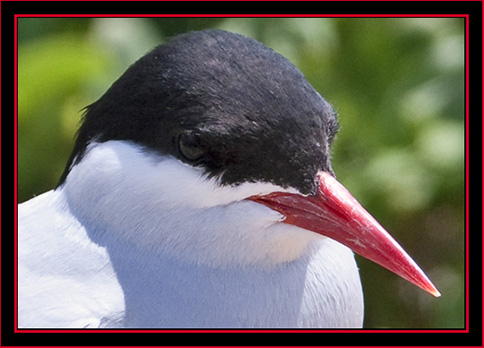
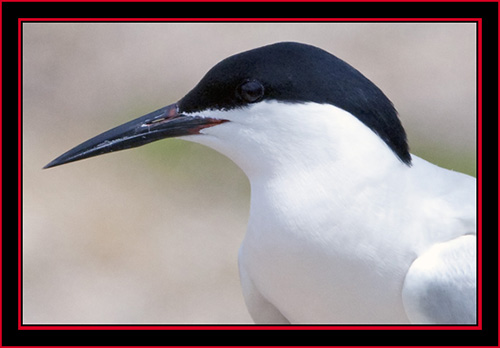
|
As I looked at the plethora of bird activity everywhere I couldn’t help but be impressed and pleased to be here to see this. For a photographer who strives to image birds
this was an incomparable treat. I set up three cameras and lens combinations - the 1Ds Mark III - my primary camera, on the tripod with the 600mm lens extended to 840
millimeters, the 5d with the 70~200 lens and the 400mm lens on my 40d. These were carried one on either side on Kirk Photo security straps. These straps have Arca-style
quick release clamps that mate with my body frames and lens plates and go over the shoulder. I’ve used these for multiple years in the field without issue although I did
learn over time to sew the straps together to prevent slippage through the buckle system. Linda and I walked to the overhead door of the boathouse and I set the tripod
up just outside. The terns didn’t dive-bomb much at the building entrance and this location appeared to be less disruptive.
Common Tern Courtship Display - Maine Coastal Islands National Wildlife RefugeCanon EOS 1Ds Mark III, 1/5000 second at 840mm; EF600mm f/4L + 1.4X at f/8, ISO 640 |
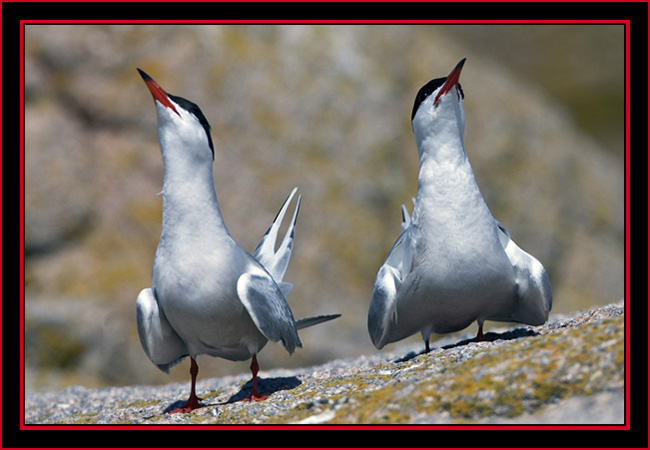
|
View From the Boathouse...

|
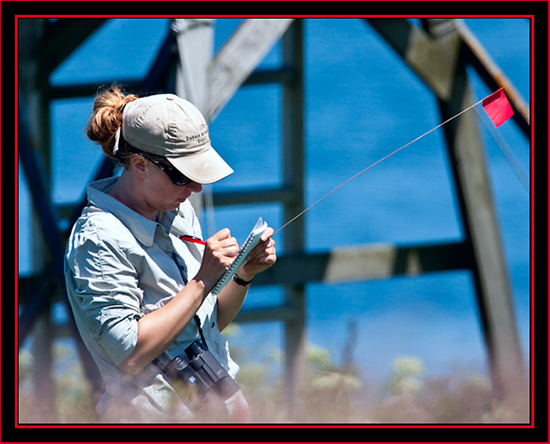
|
Photographing activities similar to this day is exciting, but it also represents a good deal of effort. I take the responsibility to produce an image archive for the
refuges I frequent earnestly and this trip was no exception. However, I probably had the best of this deal when the staff on shore & island is considered. I’m always
impressed with the dedication and attention to detail demonstrated by our federal & state Fish & Wildlife personnel. I had no doubt the staff on the island had early
mornings and long days everyday as they documented the seabirds while living on the island. With the many islands comprising the Maine Coastal Islands National Wildlife
Refuge and the geographic area they represent. I wondered how the staff keeps up with the many work-related tasks involved. It’s easy to be a visitor enjoying one of the
many refuges or parks available to the public - it’s a much different scenario to be responsible for the many aspects involved in administrating and overseeing one…
Amanda Boyd at Work - Petit Manan Island - Maine Coastal Islands National Wildlife RefugeCanon EOS 1Ds Mark III, 1/1600 second at 840mm; EF600mm f/4L + 1.4X at f/8, ISO 640 with Flash |
In past imaging sessions on land and at sea, I’d observed many Black Guillemots in breeding plumage as well as the fall/winter whitish plumage they exhibit. I’d never had
an opportunity to get especially close to one and most I photographed were taking flight from the sea as the boat passed by, or flying offshore viewed from landward. Well
today would change all that… there were many guillemots in the area around the boathouse. Even here they remained skittish and wouldn’t allow a close approach from what I
could see. But when compared to past experiences I recognized this would be an outstanding opportunity...
Black Guillemot - Maine Coastal Islands National Wildlife RefugeCanon EOS 1Ds Mark III, 1/200 second at 840mm; EF600mm f/4L + 1.4X at f/8, ISO 640 with Flash |
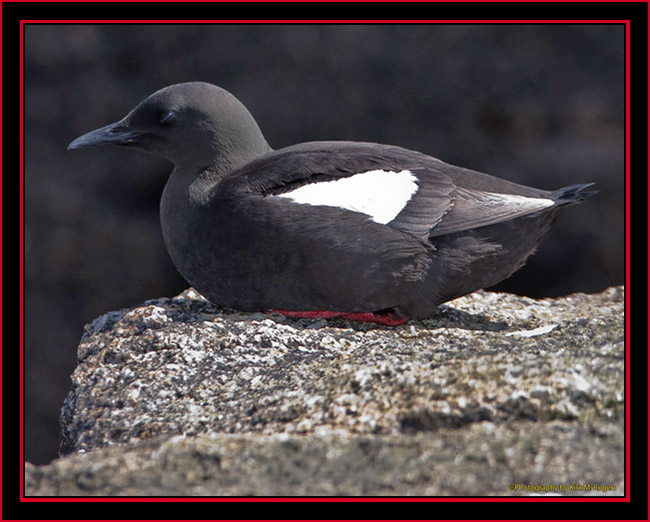
|
Black Guillemot Files...

|

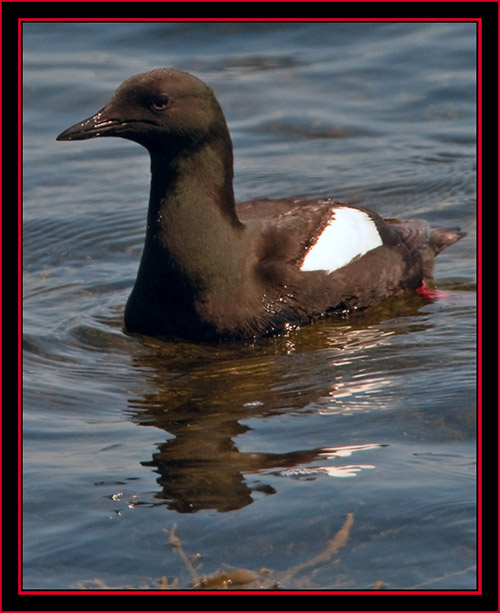
|
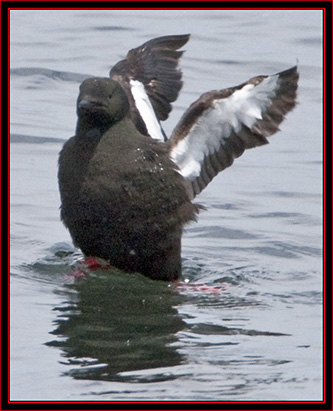
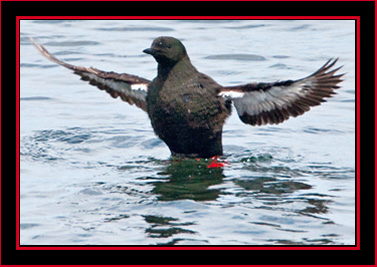
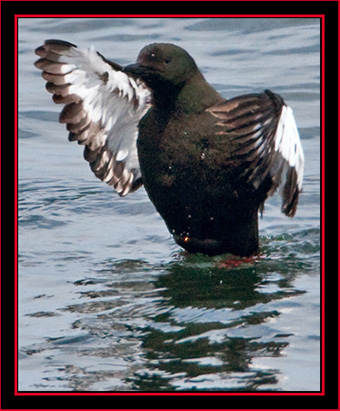
|
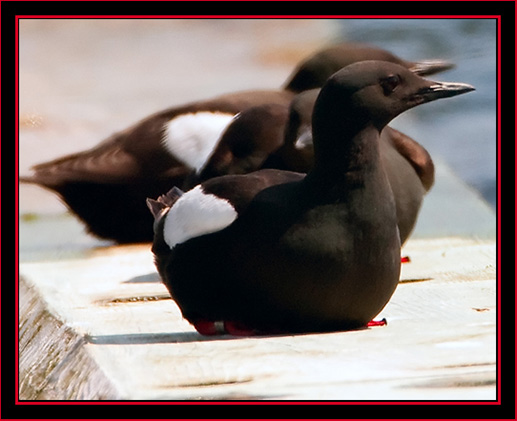
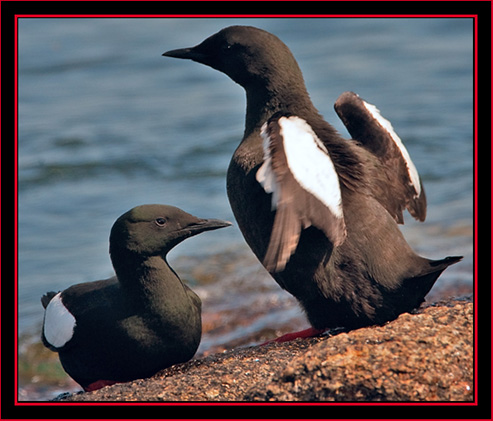
|
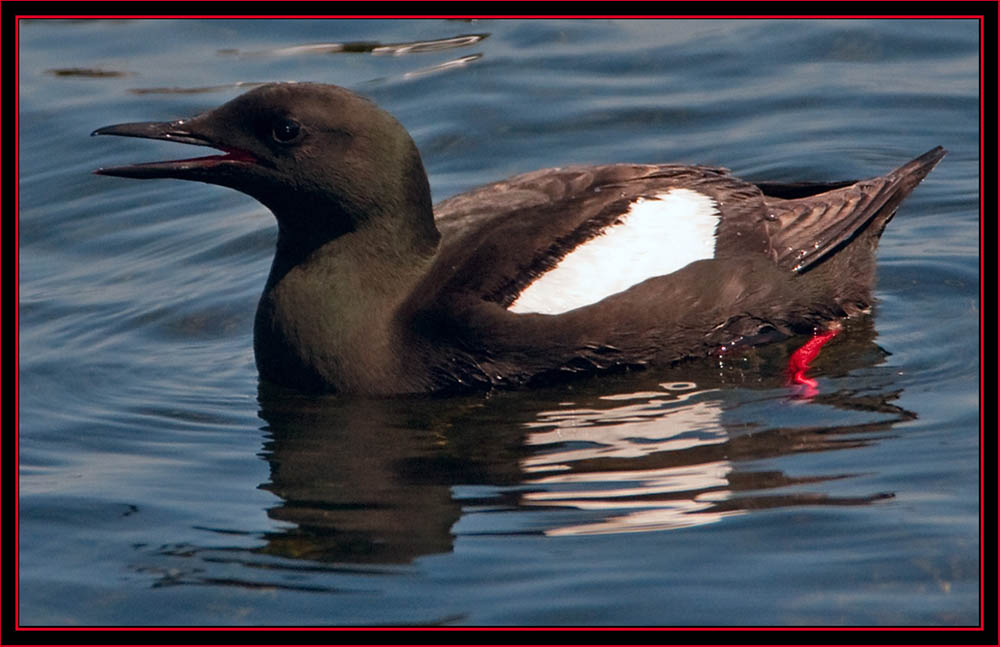
|
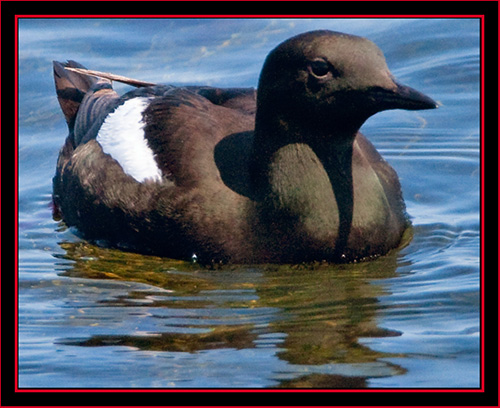
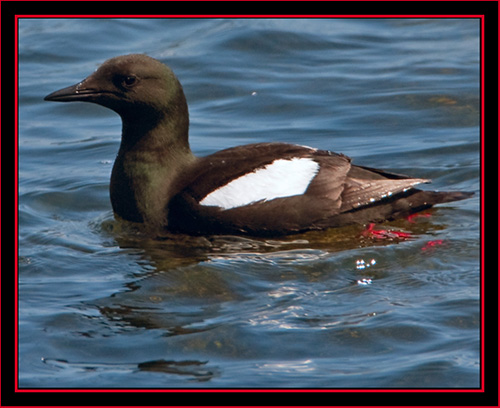
|
Common Tern Files...
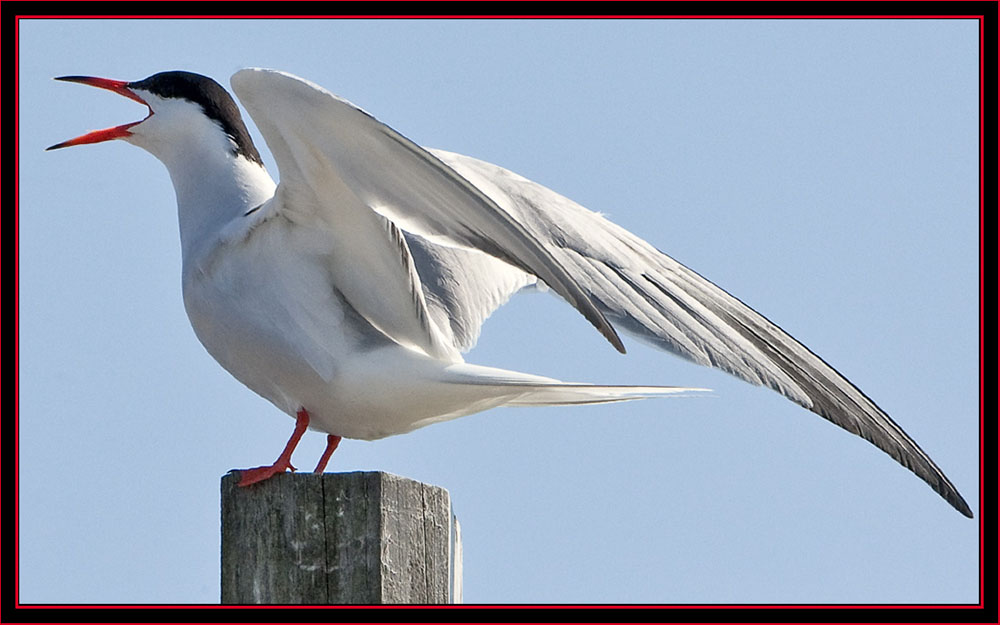
|
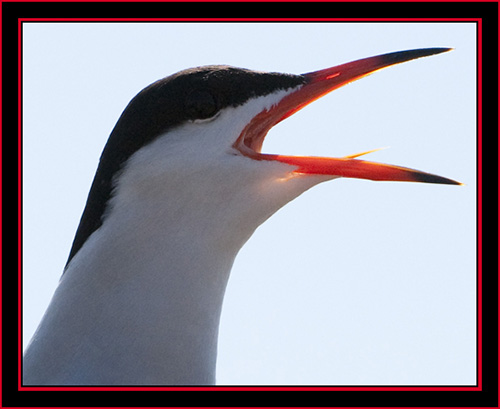
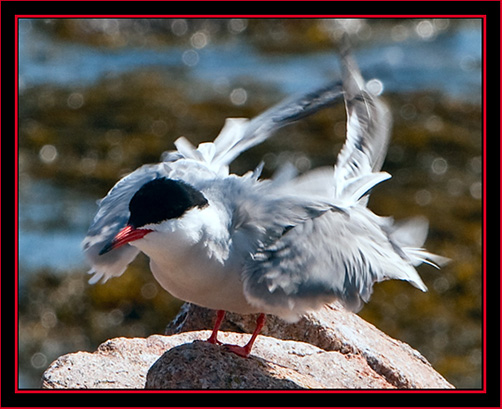
|
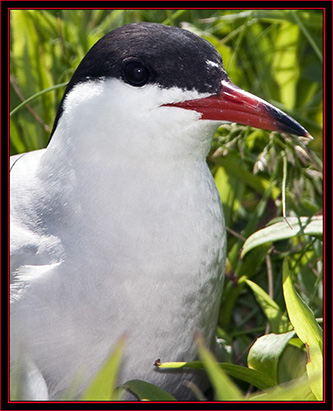
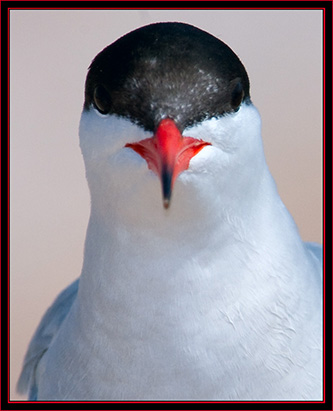
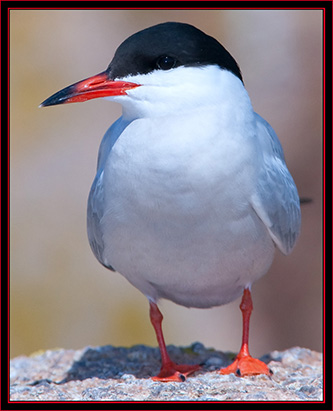
|
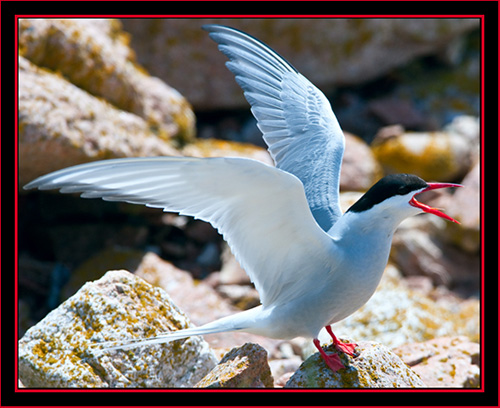
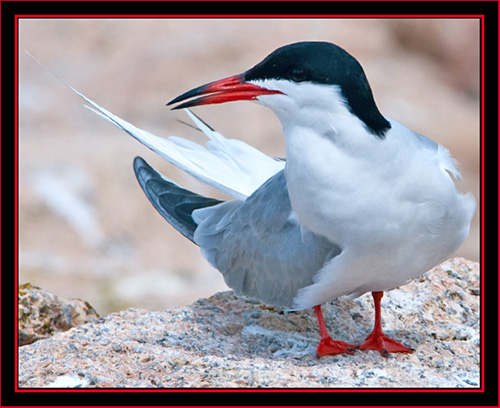
|
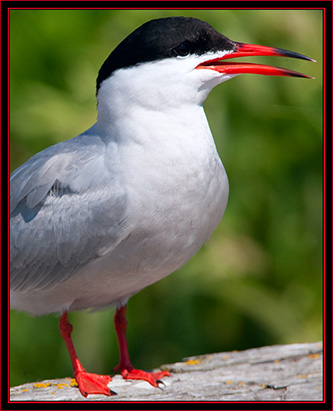
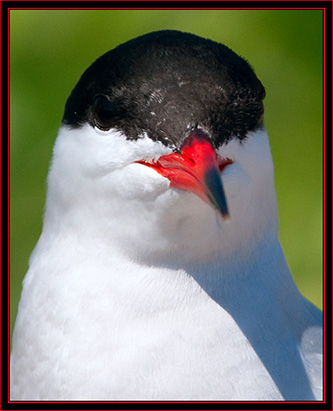
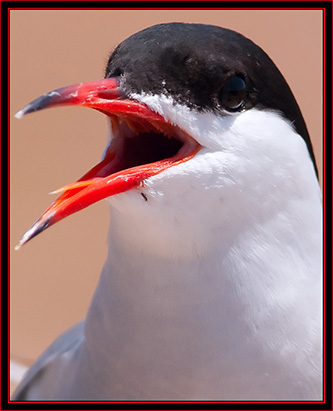
|
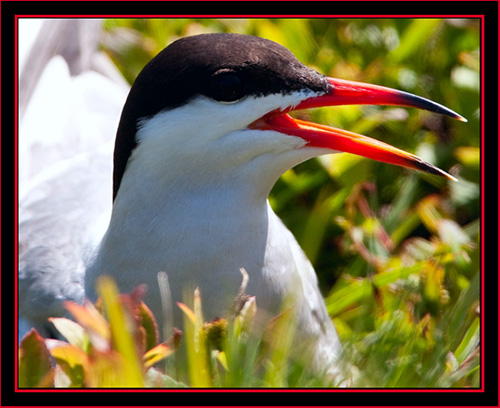
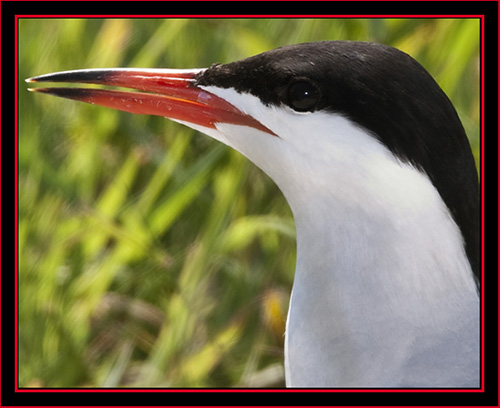
|

|

|
Linda was interested in photographically documenting the nesting terns and eggs which we discussed as we walked along towards where the Artic Terns
nested. Although the birds were everywhere on the island they did tend to be grouped by species to a degree. The ladies pointed out where the eggs were as we moved
around to make certain I didn’t inadvertently step on any. There was clearly no rhyme or reason about where the terns choose to nest – there were eggs on
the middle of the boardwalk, eggs on concrete walks, everywhere in the grassy areas – eggs all over the place. All or nearly all were flagged but even viewing the flag
doesn’t exactly indicate where the egg may be. Some eggs were in rudimentary nests, others were basically in the open.
Common Tern Eggs - Petit Manan Island - Maine Coastal Islands National Wildlife RefugeCanon EOS 40d, 1/800 second at 400mm; EF400mm f/5.6L at f/8, ISO 640 |
It was a beautiful day and by late morning it was warming up quite a bit. I found photographing nests presented a minor challenge. In most instances the grass &
scrubby ground cover in the areas was high enough to present an obstruction. With a macro lens I could have moved closer to the nest and got lower - next time I
do this I’ll be sure to bring one along. On the other hand there were multiple opportunities around, so one could pick and choose which to photograph with or without the birds
present.
Common Tern on Nest - Maine Coastal Islands National Wildlife RefugeCanon EOS 40d, 1/1600 second at 400mm; EF400mm f/5.6L at f/8, ISO 640 |

|
Nesting Common Tern & Egg Files...


|

|


|
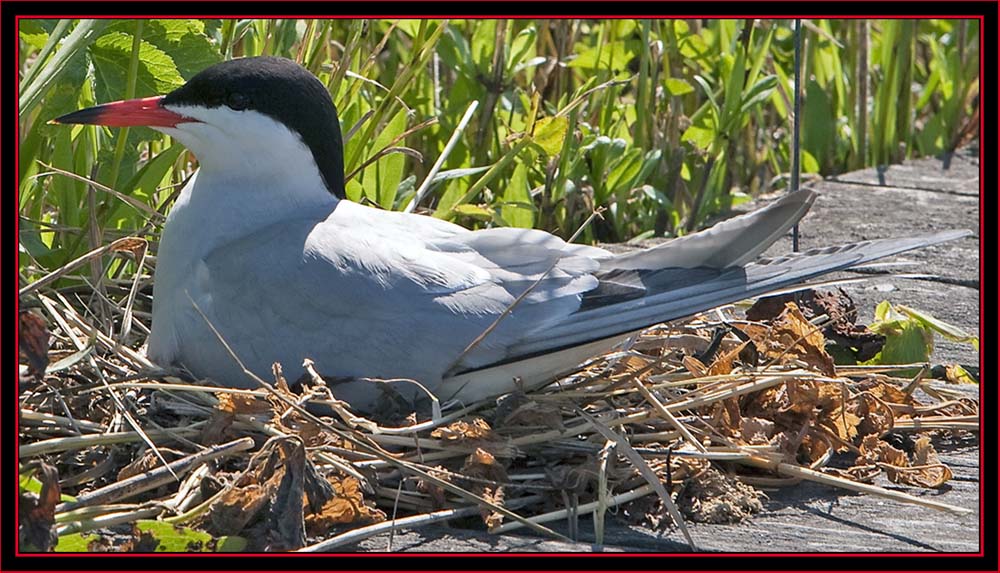
|
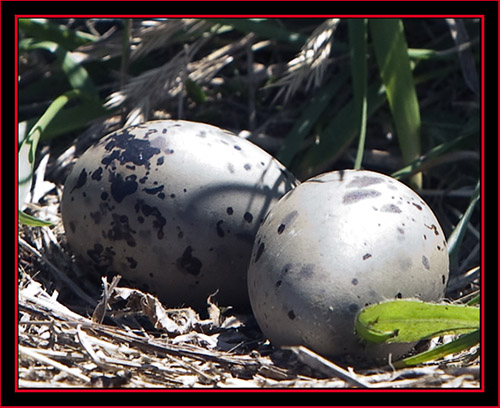
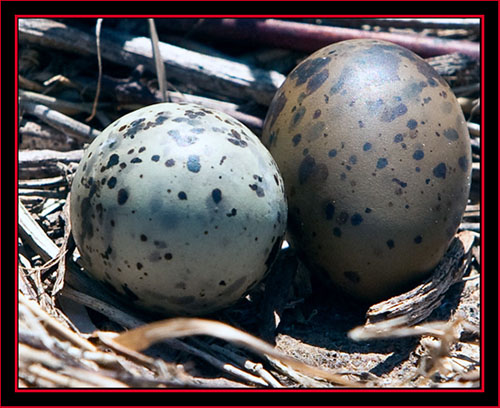
|
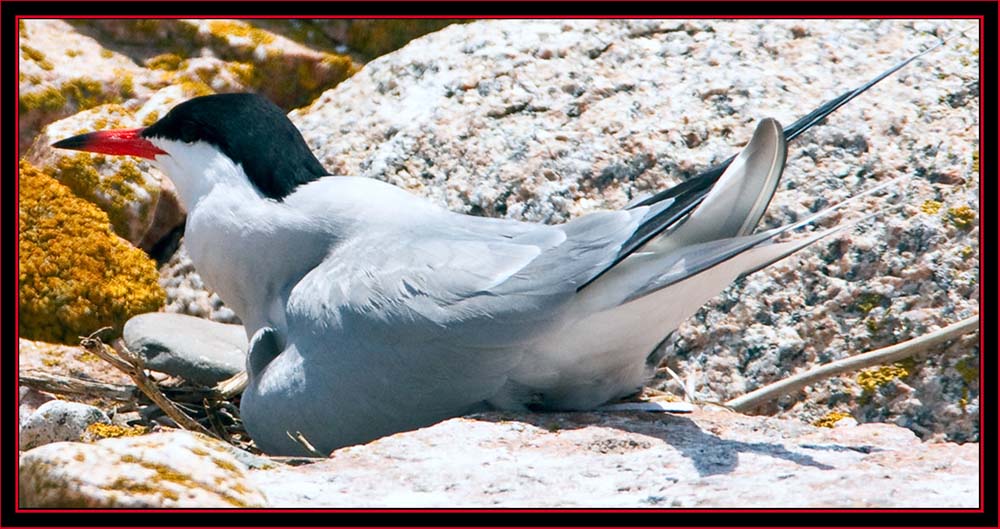
|

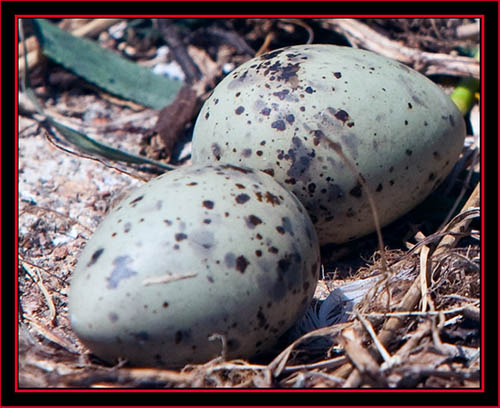
|
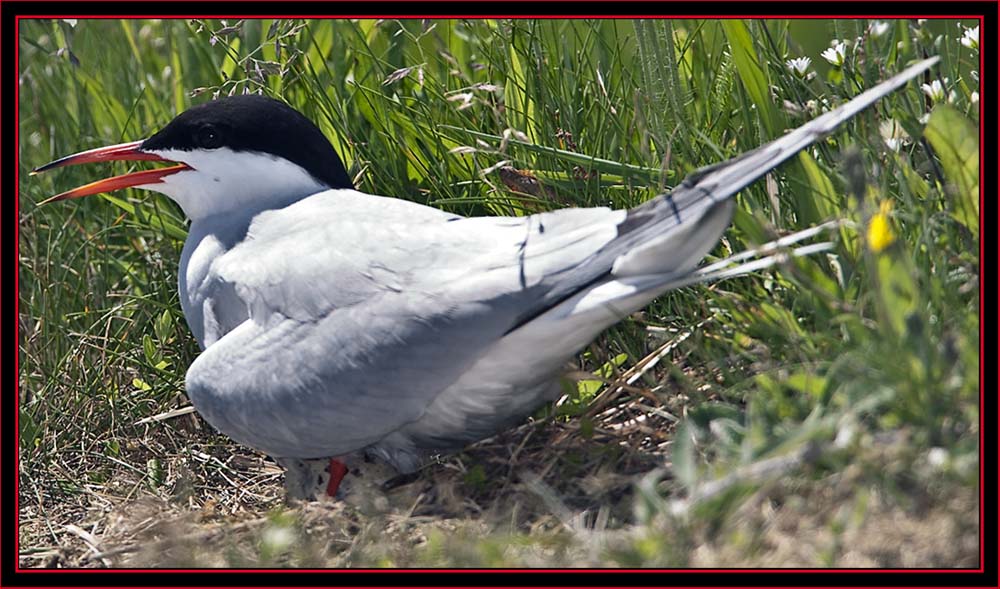
|

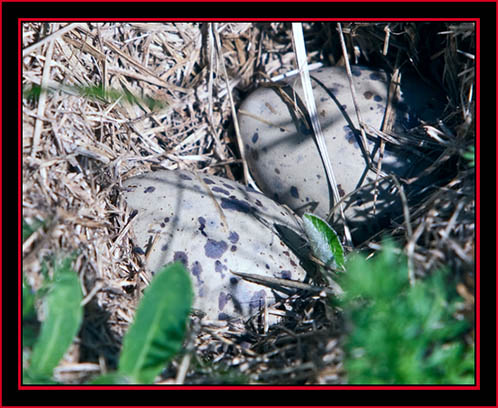
|
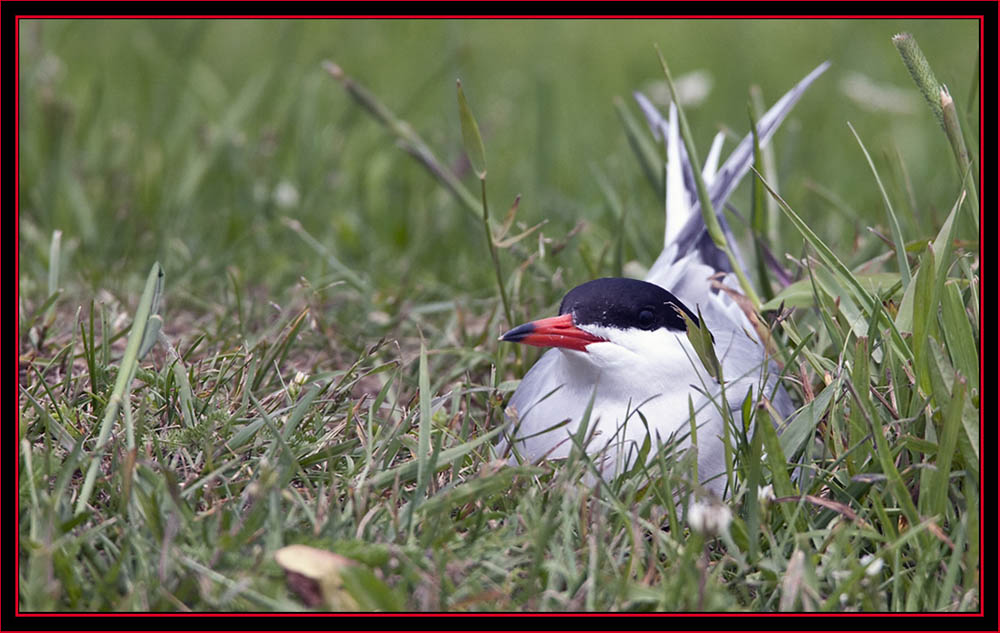
|


|

|
It was still early in the season for the eggs to hatch but Linda was informed there was one nest with chicks present. We located this nest close to the boardwalk
and I observed the Common Tern chicks. I commented to Linda that I definitely had to come back to document the next phase when hundreds of the little ones hatched out…
A note pursuant to identifications: Looking at the tern eggs I couldn’t tell which species they belonged to – they were all quite similar. I don’t doubt that some of the staff could tell one species from the other after spending much time in the field from experience. In instances where I identified the eggs it was from the flag marking the nest indicating the species. In some cases I photographed the scene to keep the flag in view so later on I could tell which tern species it was when viewing the images on the computer… Common Tern Chicks - Petit Manan Island - Maine Coastal Islands National Wildlife RefugeCanon EOS 40d, 1/400 second at 400mm; EF 70~200mm f/2.8L at 78mm, f/8, ISO 400 |
Common Tern Chicks
Canon EOS 40d, 1/400 second at 90mm; EF 70~200mm f/2.8L at f/8, ISO 400

|
We were on the boardwalk by the helipad platform and observed quite a few Artic Terns on the other side of the structure, most sitting on marker
posts. I took a few exposures then climbed on the platform to make a closer approach for a few more. I got down on the other side closest to the terns and
leveled the tripod in the high grass while waiting for the terns to return. I viewed a Savannah Sparrow and swung around to capture the scene with a handheld camera.
Savannah Sparrow - Maine Coastal Islands National Wildlife RefugeCanon EOS 40d, 1/640 second at 400mm; EF400mm f/5.6L at f/8, ISO 640 |

|
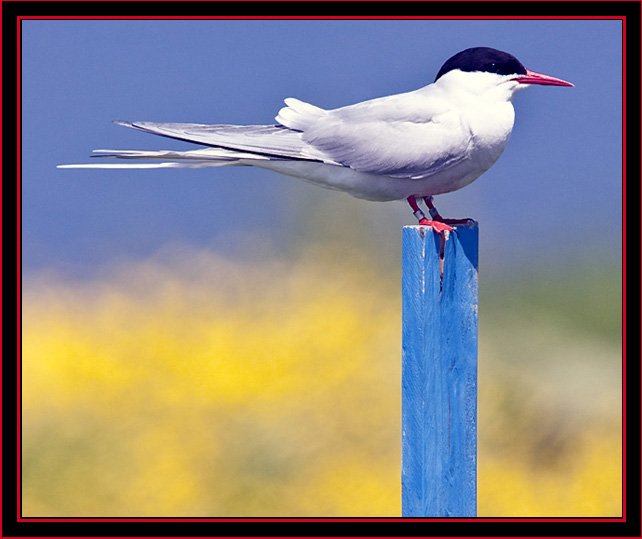
|
From my location this section appeared to be a hotspot for Arctic Terns so I stayed for a time viewing the scene. Linda gave me a few minutes and then joined
me. We wanted to photograph some Artic nests and eggs here, but the grass was high and we’d have to learn what opportunities may be presented.
Arctic Tern - Blue Sky Above, Flowers Below - Petit Manan Island - Maine Coastal Islands National Wildlife RefugeCanon EOS 1Ds Mark III, 1/2000 second at 840mm; EF600mm f/4L + 1.4X at f/8, ISO 640 with Flash |
Arctic Tern Files...

|

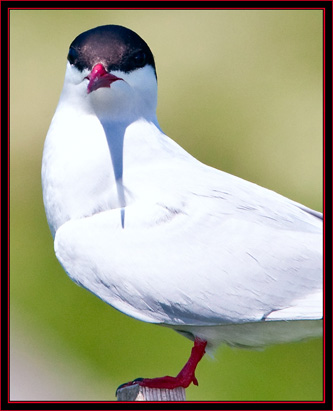
|

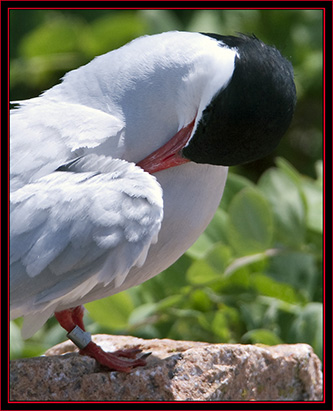

|
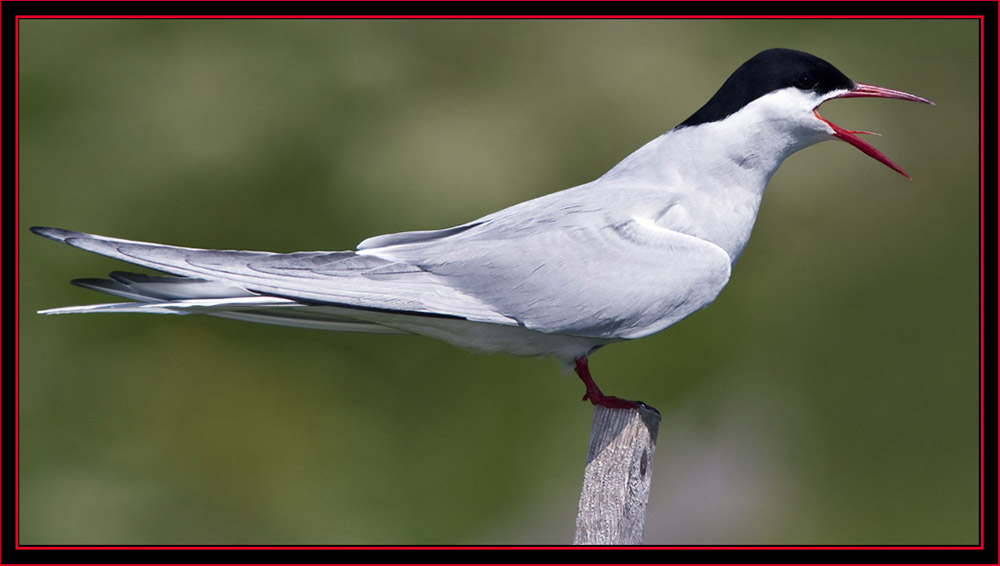
|
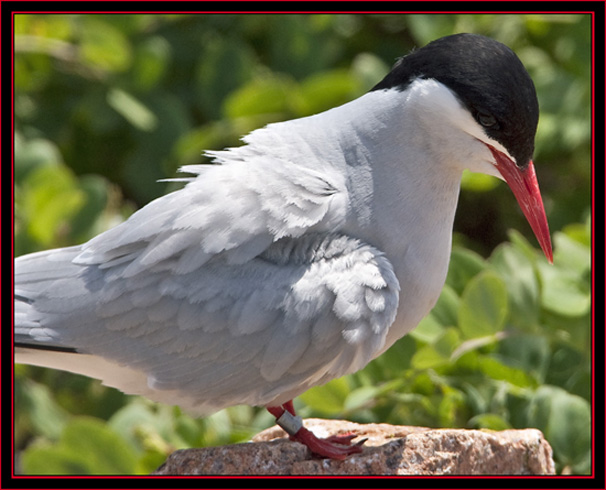
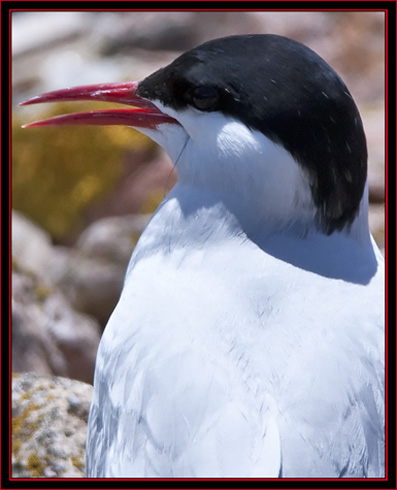
|
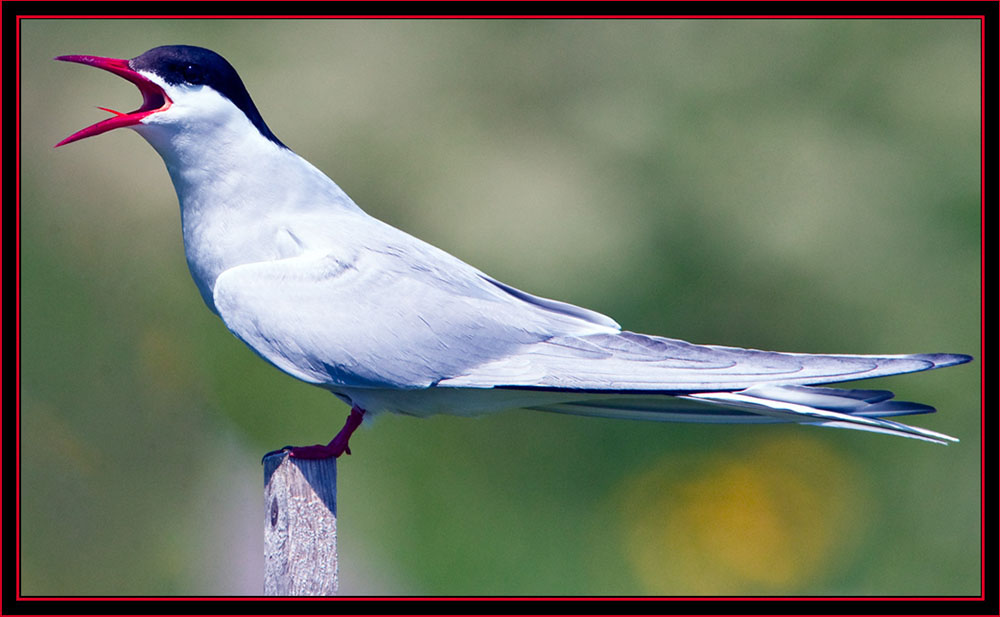
|
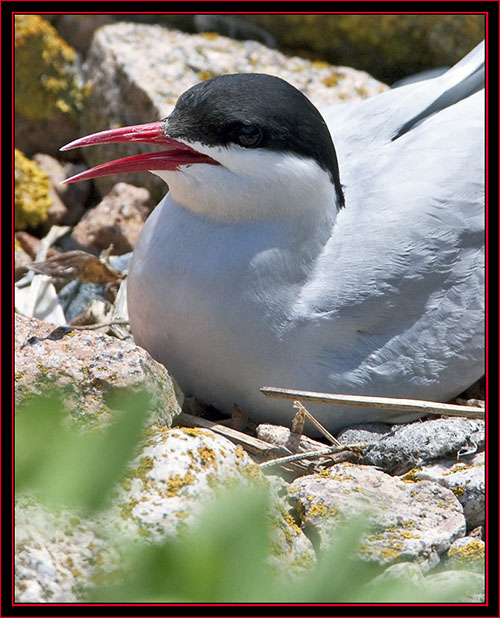
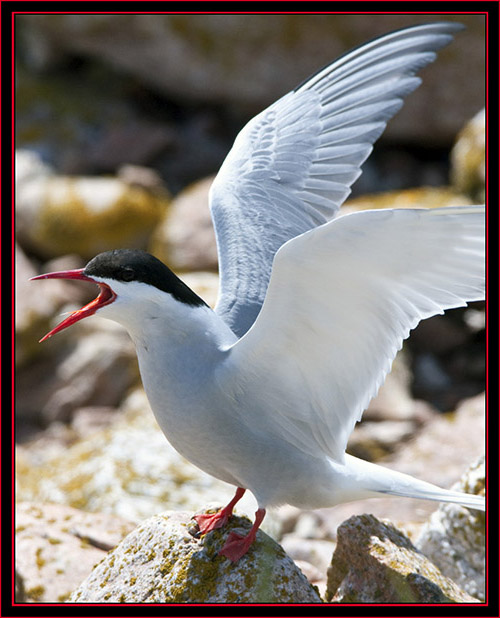
|

|
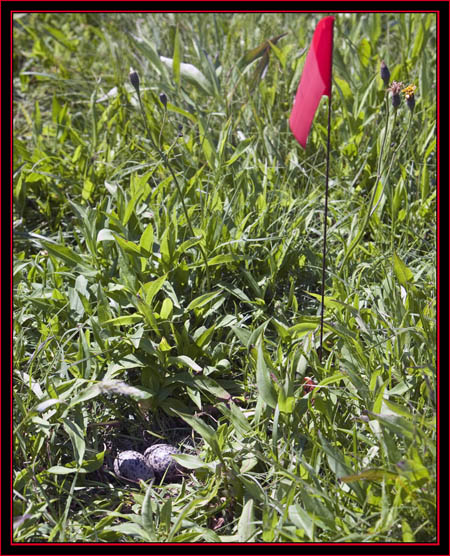
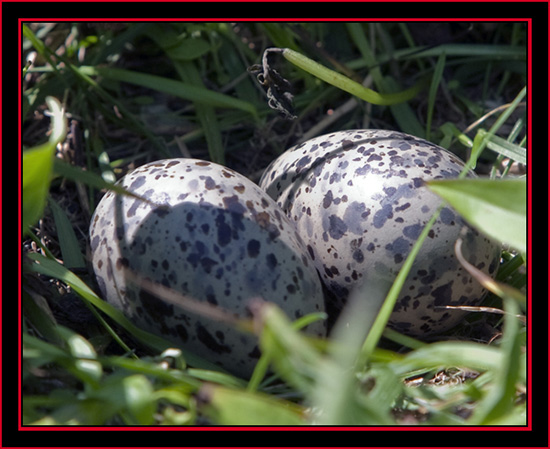
|


|

|
|
After I thought we’d taken sufficient exposures on the Arctic Terns Chelsea, Linda and I walked towards the ledge where the puffins were most likely to be found.
There were a few around – nothing close, but we did spot a group of Razorbills looking out to sea. I dropped the tripod and took a few shots to
capture the scene as can be viewed at right. There were other Razorbills in the area but most of the activity appeared to be on the water.
I learned quickly enough when carrying the tripod if I kept the flash extender above my head it served as a 'tern attack' deterrent. The staff dealt with getting pecked by the terns in various ways – Linda held her baseball hat above her head as she walked, Matt modified one of the wire mounted flags to go on his hat to project above his head, Leticia always wore a hardhat, etc. I recall only two significant head pecks from the day but I was informed at times these can be severe enough to draw blood. Another point - it’s always a good practice when carrying a tripod to never point the lens skyward – a bird flying overhead can sure put a damper on your day should one let loose on your optics… Linda related a less than pleasant incident she had recently while looking skyward to reinforce this point. I gathered from comments that you weren’t considered a steely-eyed seabird journeyman until you’d experienced at least one mouthful of tern excrement noted in your record… Razorbill Group - Maine Coastal Islands National Wildlife RefugeCanon EOS 1Ds Mark III, 1/1600 second at 840mm; EF600mm f/4L + 1.4X at f/8, ISO 640 with Flash |
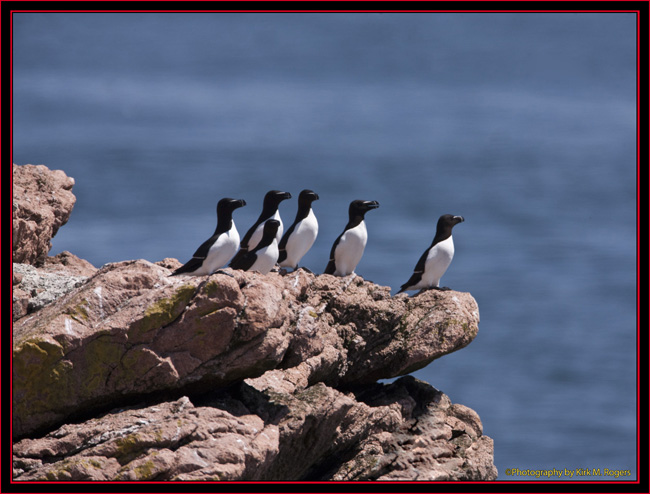
|
Atlantic Puffin - Petit Manan Island - Maine Coastal Islands National Wildlife Refuge
Canon EOS 1Ds Mark III, 1/1600 second at 840mm; EF600mm f/4L + 1.4X at f/8, ISO 640
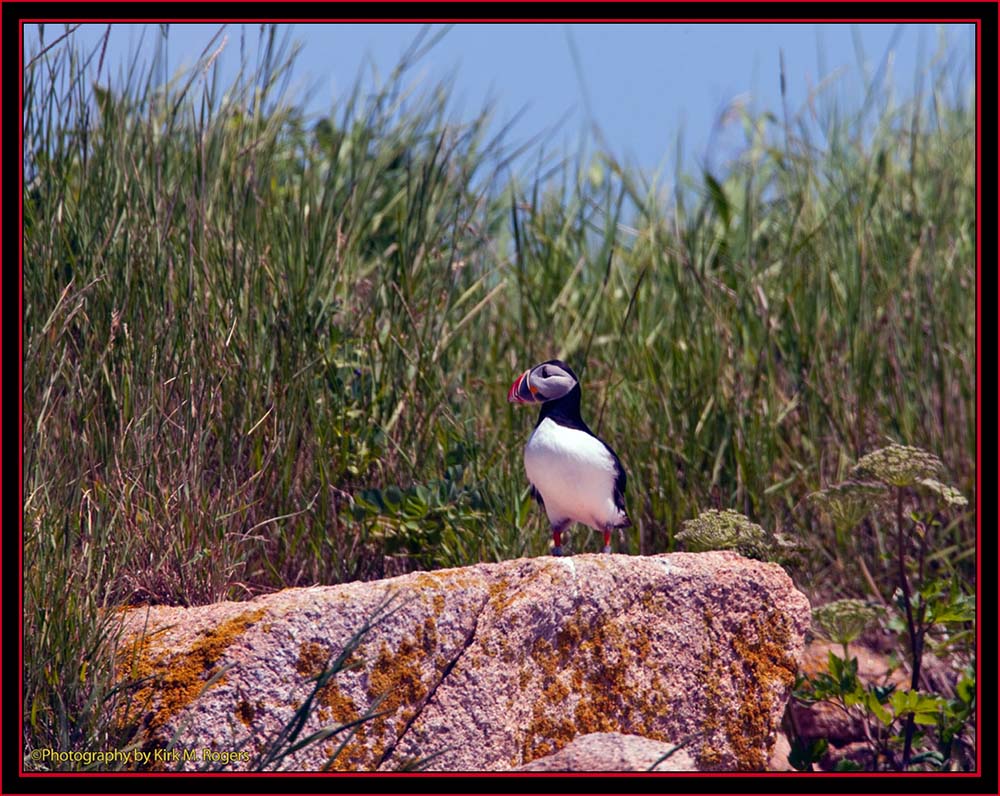
|
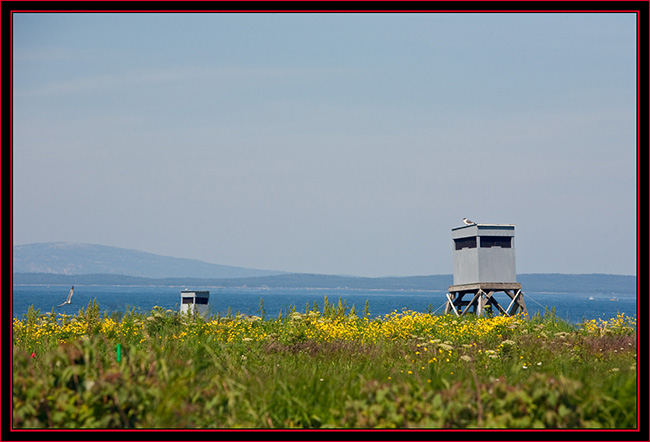
|
Linda asked if I wanted to go into a blind for awhile… This would allow the birds to settle down and I’d achieve a better vantage point to check out the
area. I agreed and we walked over to one so I could have a look to see if the blind would accommodate my system. These blinds are designed for one person to sit quietly and
observe. They varied in size around the island but none were large. I believe I was in one that was four feet by four feet – I’m not certain exactly but would comment it was fairly small. I
closed up the tripod
legs and handed it up to Linda then we exchanged places. There was a folding fabric camp chair in the blind but Chelsea was kind enough to bring over a metal folding
chair from the house for my use. The camp version would not allow the movement of a metal chair and I couldn’t sit back with my eye in the viewfinder. It wasn’t simple to make
the 600mm lens system work in this confined area. If the lens height was adjusted and leveled to observe out the port all I could view was the ocean. I placed
two tripod legs tight to the door and jacked the third up to obtain a down angle on the lens, which worked. Drawbacks included the fact the swing arm on the Wimberley
head was against the door so there was little range of motion available. It was similar to using your vehicle as a blind with a long lens stuck out the
window – also one-directional. I had to dismount the Better Beamer and flash head as there wasn’t enough room above the port for it to project out. I was in the
blind with a tripod, two handheld cameras, a chair and a rudimentary bench someone had been using. I’m certain Linda had other things to do besides spend all her
time with me so I was provided with a radio and left to my own devices. Once I figured out what I could and could not do, and what field of view was available with the lens,
I was enjoying it quite well.
Observation Blinds on Petit Manan Island - Maine Coastal Islands National Wildlife RefugeCanon EOS 1Ds Mark III, 1/2000 second at 840mm; EF600mm f/4L + 1.4X at f/8, ISO 640 with Flash |
Some views from the Blind...
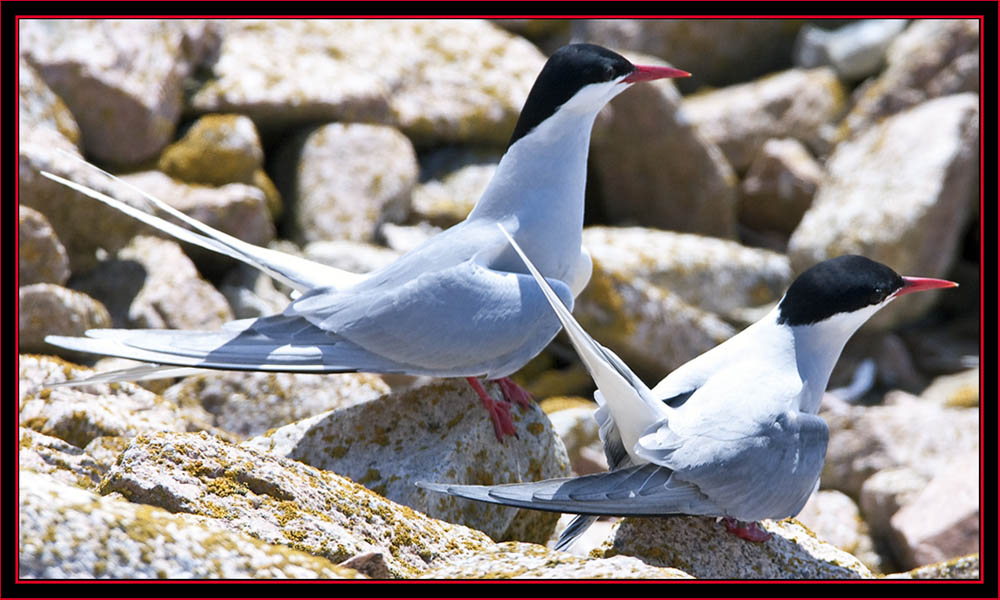
|

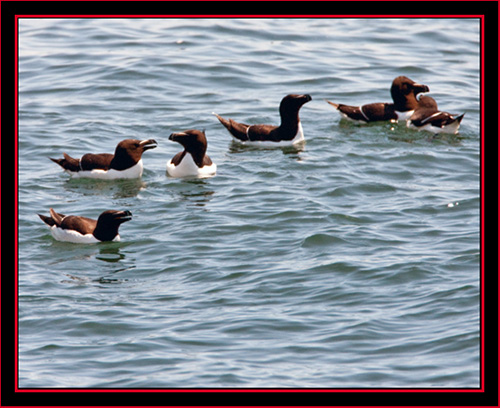
|
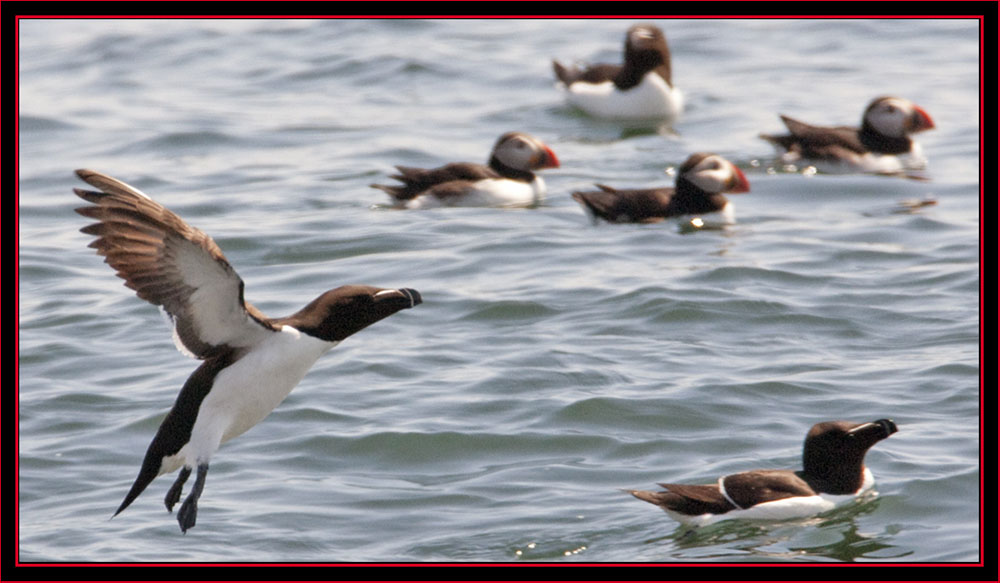
|
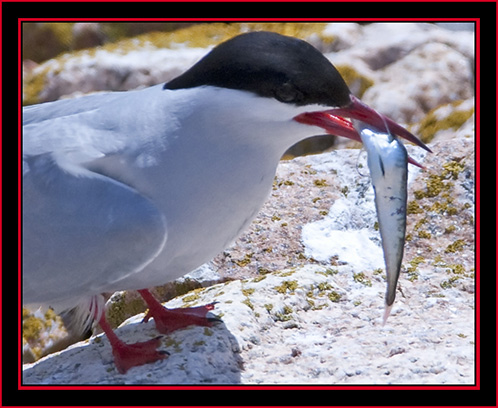
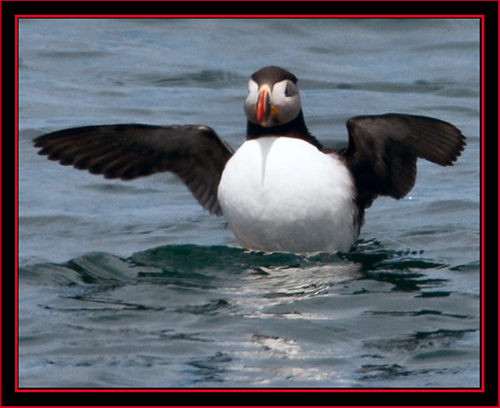
|
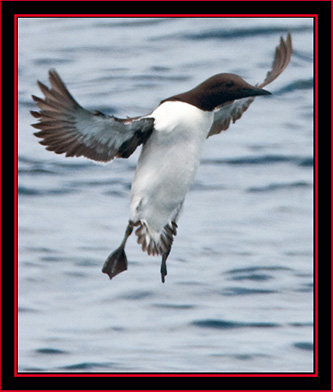
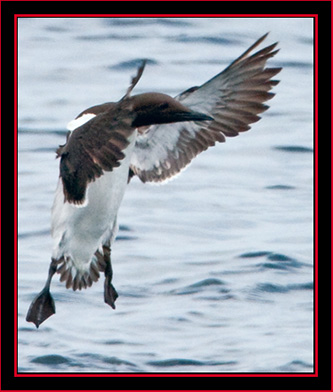
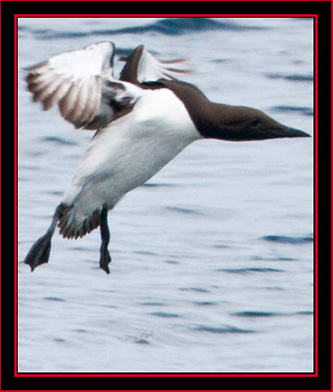
|
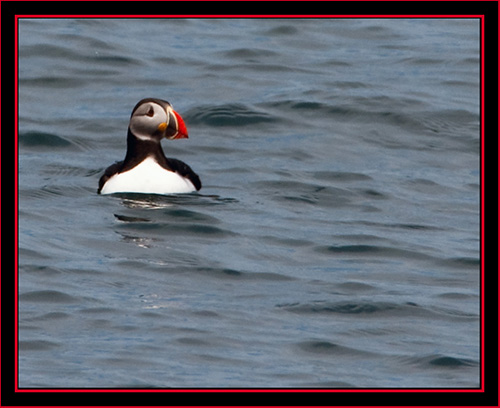
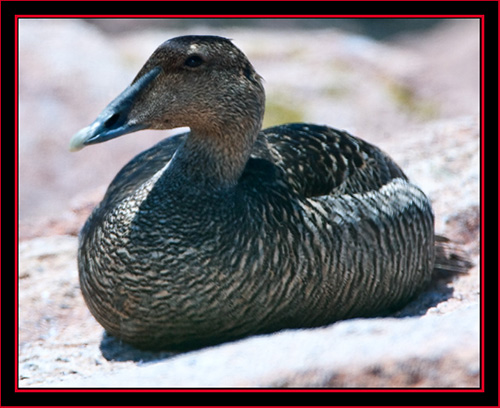
|
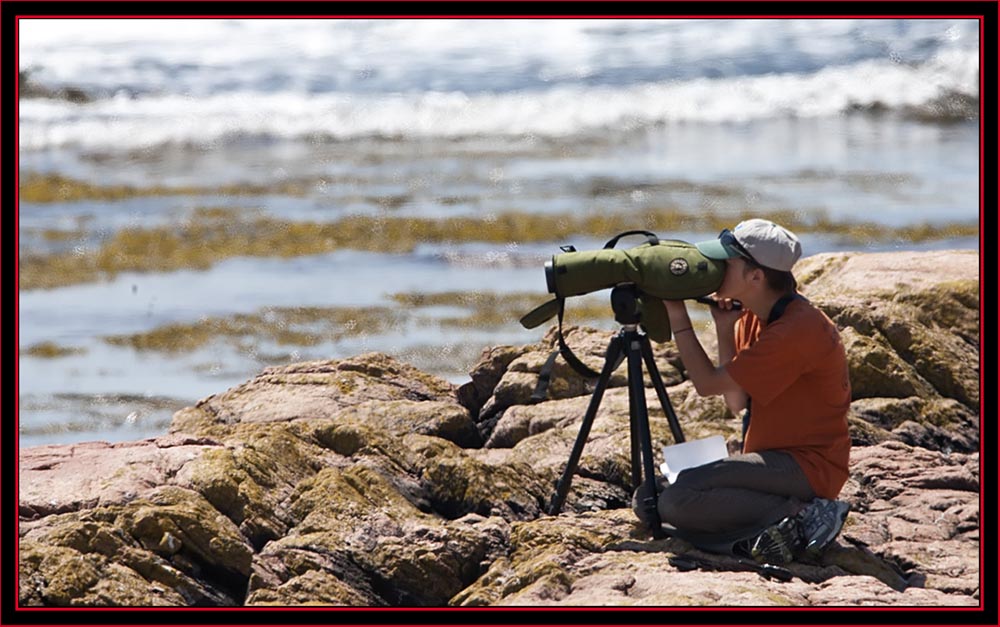
|
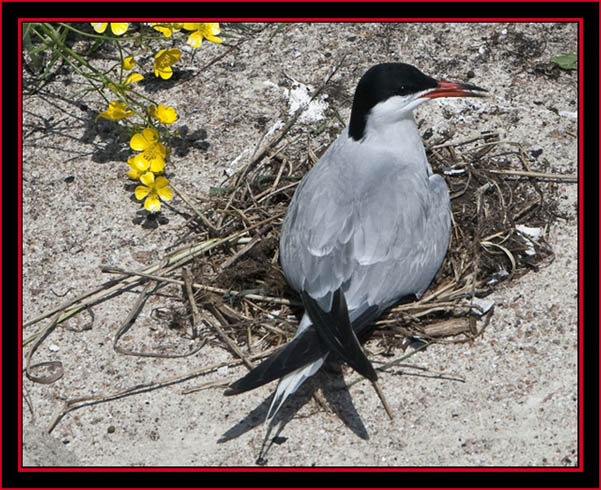
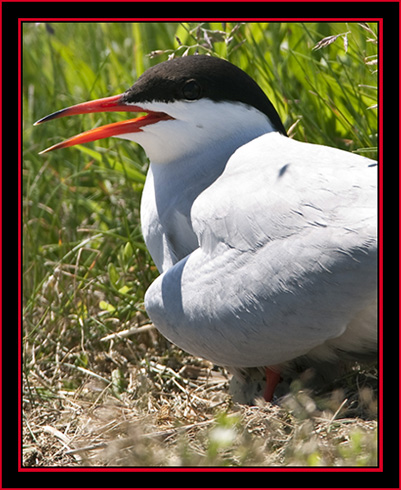
|
There were some Black Guillemots on the rocks ahead and to the right of the blind. I observed quite a few birds flying across my field of view over the
water, which was a considerable distance from my location. I took some exposures on these birds but it was difficult to obtain a focus lock in the short distance
I could track them. I learned if I moved around I could open the ports to the left and right of the chair and if I contorted enough I could get one of the handheld
lenses pointed out the port to shoot straight down on some nesting terns below…
Black Guillemot - Maine Coastal Islands National Wildlife RefugeCanon EOS 1Ds Mark III, 1/1000 second at 840mm; EF600mm f/4L + 1.4X at f/8, ISO 640 |
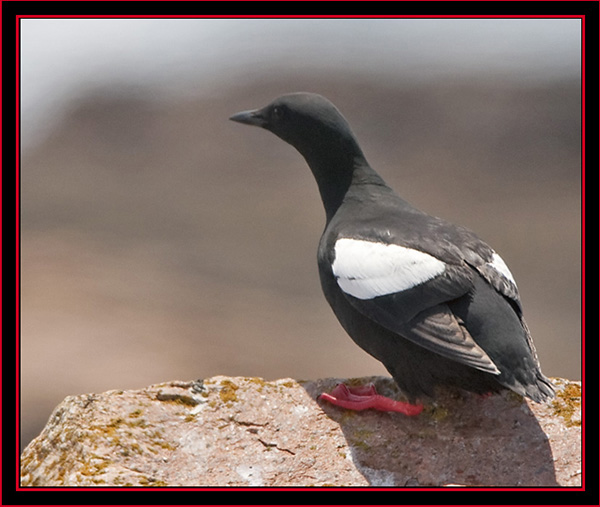
|
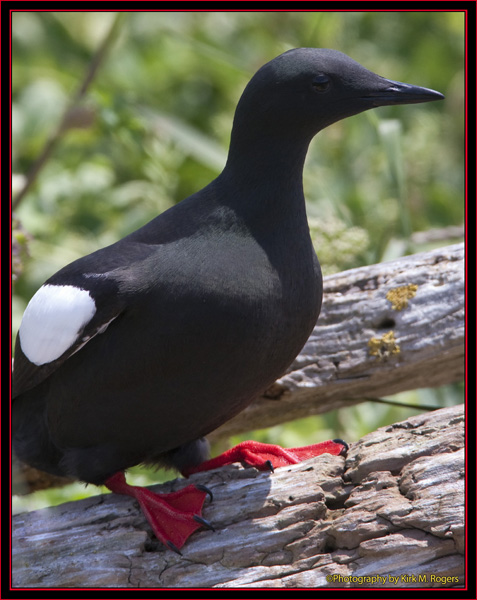
|
I noticed some movement to my far left and observed a guillemot standing on a log. This was especially close compared to some others and I was interested in getting
the lens on this bird. However, the only way I could achieve this was to push the tripod all the way to the right in the blind and then the lens just barely captured
the scene. This was a bit of a problem because the guillemot only stayed in view a few seconds at a time, and if I left the lens in that position I couldn’t do much of
anything else while waiting. This bird flew right in front of me at times. Other times it just appeared so must have flown in from behind the blind. I kept checking the
log occasionally hoping to obtain a shot on this bird and so far only had several exposures when it was flying away. Finally my patience was rewarded – I got the red-footed bird
standing on the log for the few seconds it hung around…
Black Guillemot Near Nesting Site - Maine Coastal Islands National Wildlife RefugeCanon EOS 1Ds Mark III, 1/640 second at 840mm; EF600mm f/4L + 1.4X at f/8, ISO 640 |
Linda had already contacted me on the radio and asked if I wanted to come out of the blind before I finally got the image I was seeking. I told her I needed a few more
minutes and afterwards radioed I was ready to come out. Once out of the blind I indicated there had to be a guillemot nest under the log I’d been observing as the bird
kept returning to the same spot. Chelsea, Linda and I walked over to check it out and sure enough – there was a single egg larger than a tern sample burrowed under the
log. This was a difficult shot – bright light outside and fairly dark inside but I got low & took some exposures of the egg…
Black Guillemot Nest & Egg - Maine Coastal Islands National Wildlife RefugeCanon EOS 5d, 1/80 second at 200mm; EF 70~200mm f/2.8L at f/10, ISO 800 |

|
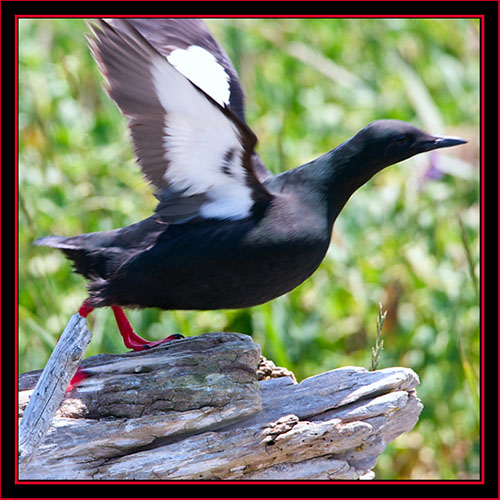

|
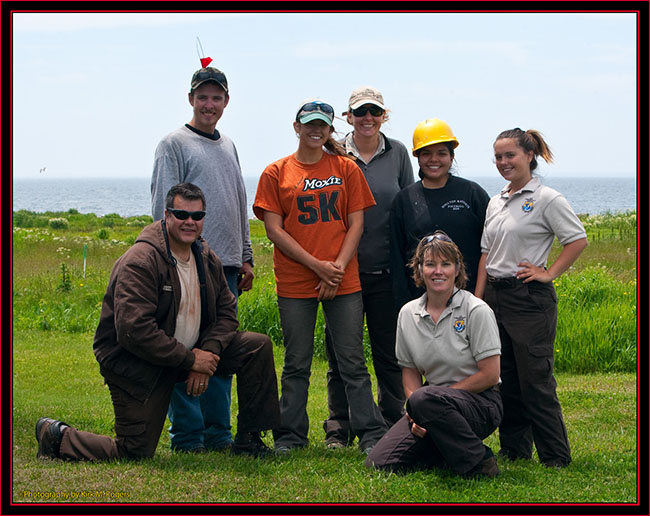
|
Linda stated that everyone was meeting at the house for a late lunch so we walked over. I drank several bottles of water and ate some trail mix and was ready to go. I suggested that
Linda gather the crew so I could take a photograph for record and she managed to get everyone together to do this.
The Crew on Petit Manan Island - Maine Coastal Islands National Wildlife Refuge
Canon 5d, 1/500 second at 70mm; EF 70~200mm f/2.8L + 1.4X at f/13, ISO 800
|
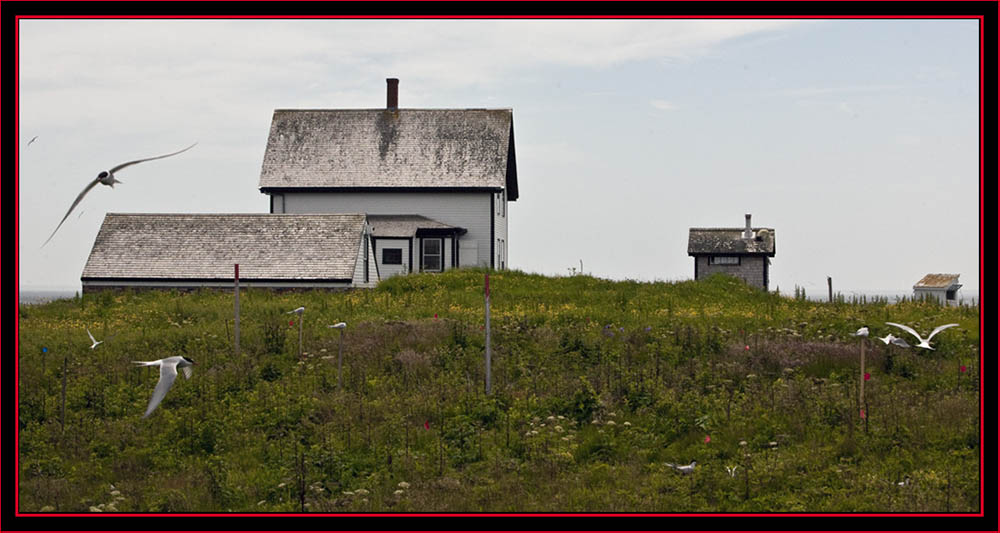
|
Amanda told me she knew where I could find some Roseate Terns, a species that didn’t appear to have a significant presence on the island. We walked over to an area with a blind and she pointed
one out for me to investigate through the lens – I took a few exposures. I asked her to look at the file on the camera’s LCD
screen. Nope – wrong bird… I looked again and located the Roseate. With Amanda’s expert tutelage indicating where the bird (or birds) was nesting I climbed up the ladder into the blind to have
a look. This blind was much like the last one I’d entered except much closer to the lighthouse & fog horn. Linda had already provided earplugs for this area because the fog horn sounded twice every
minute. If you were close by, the horn was quite loud although one normalizes to this to some degree I found…
Roseate Tern - Maine Coastal Islands National Wildlife RefugeCanon EOS 1Ds Mark III, 1/3200 second at 840mm; EF600mm f/4L + 1.4X at f/8, ISO 640 |
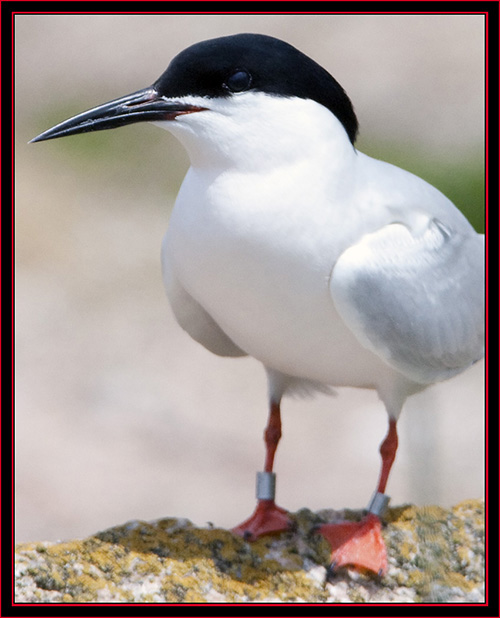
|
Roseate Tern Views
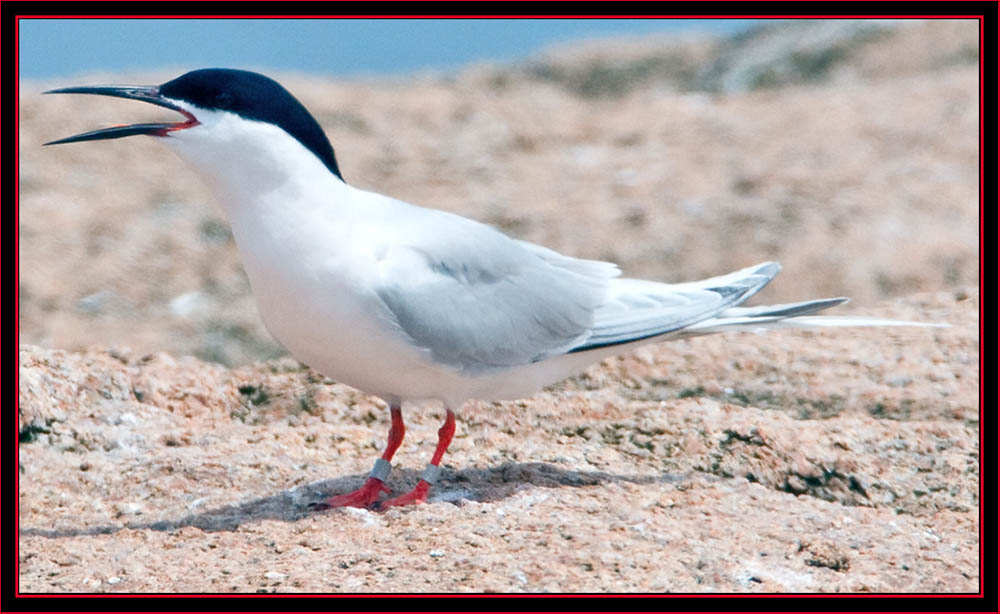
|
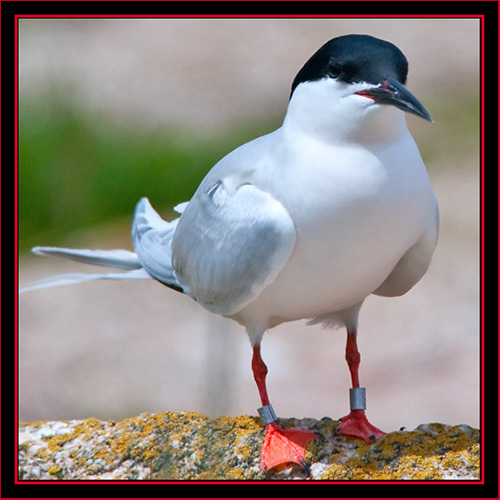
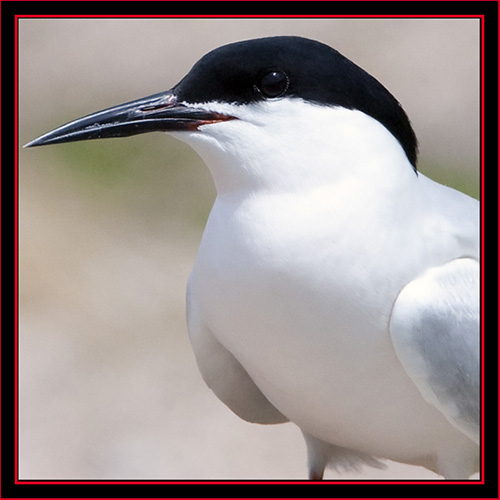
|
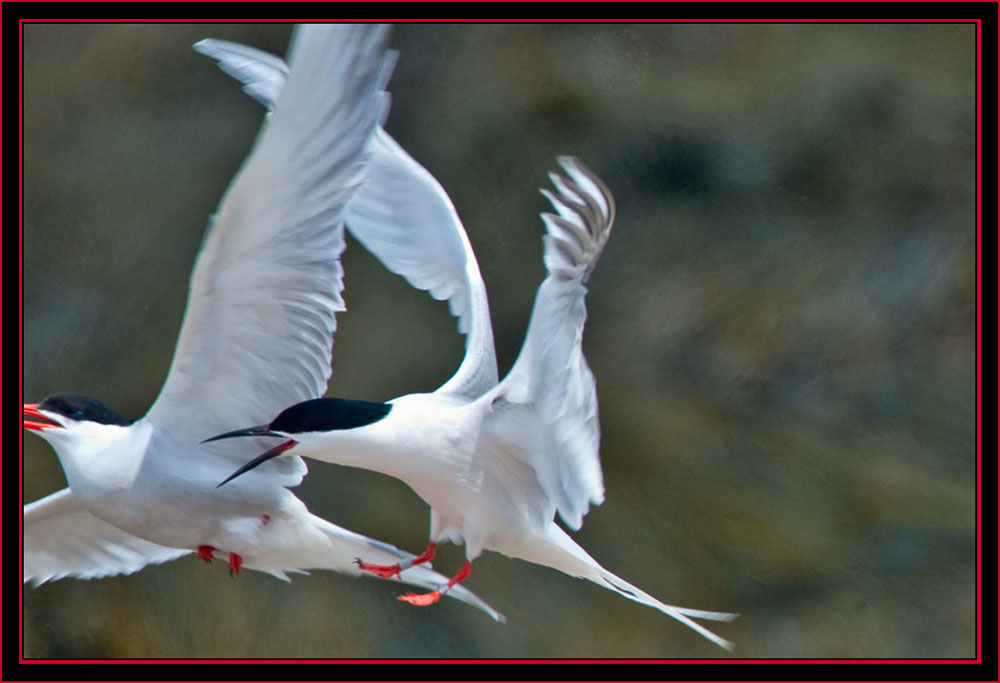
|
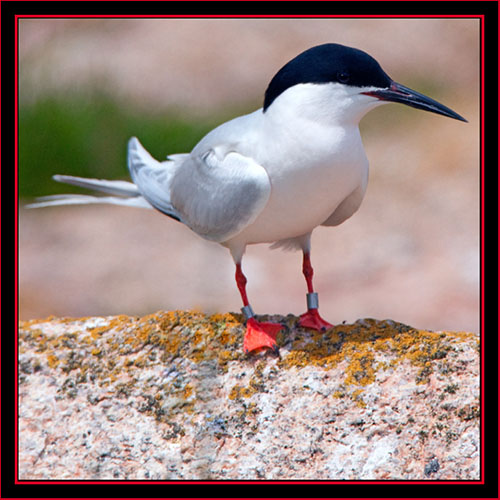
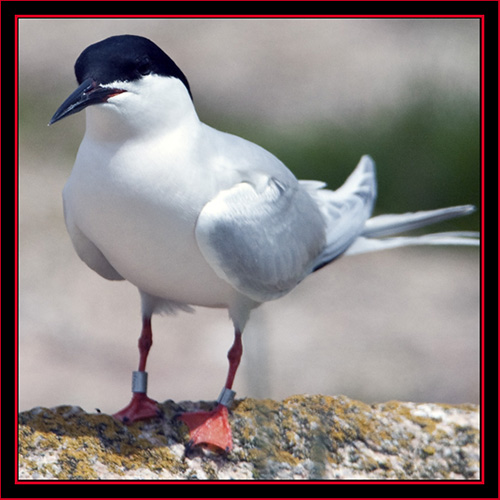
|
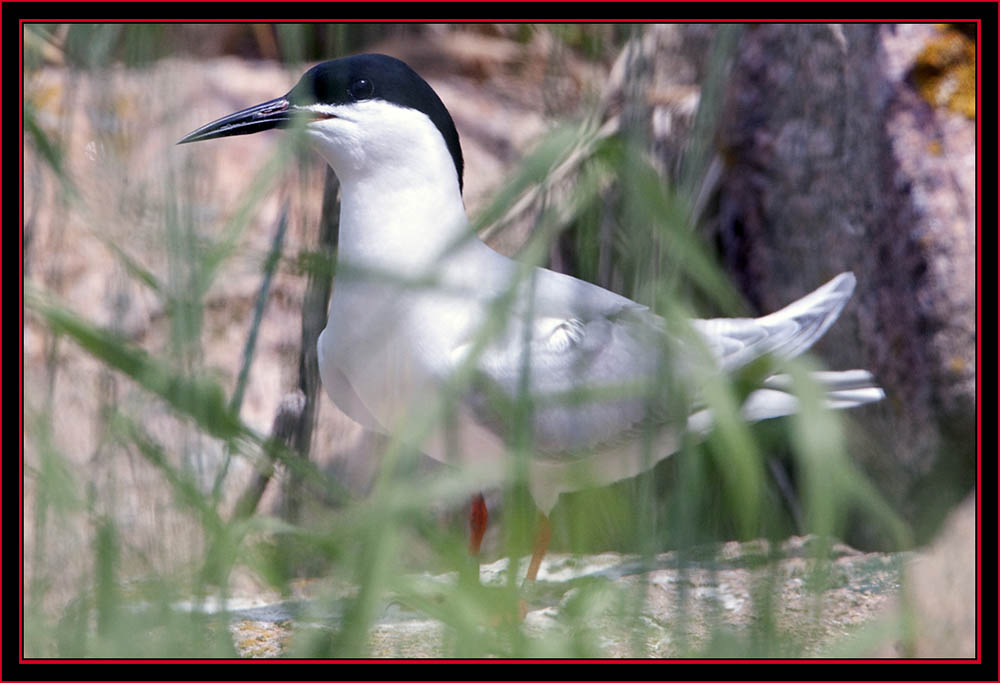
|
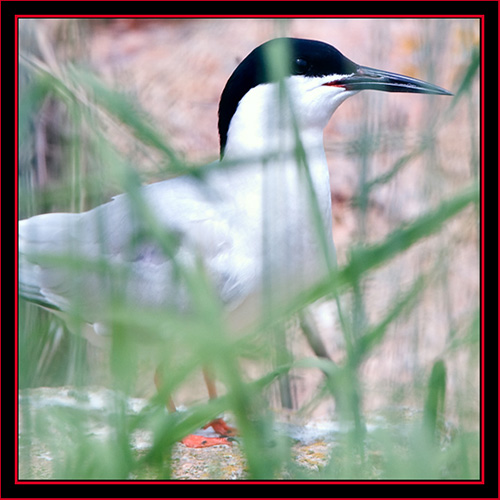
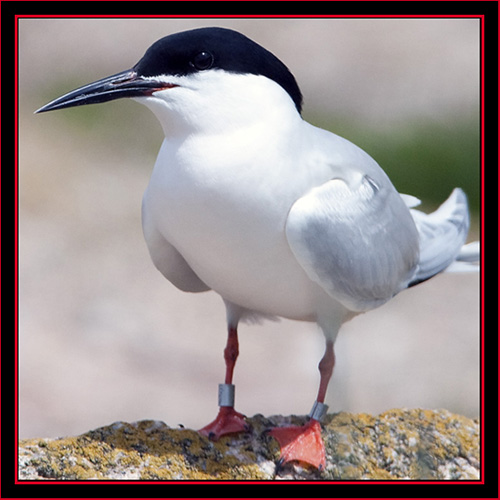
|
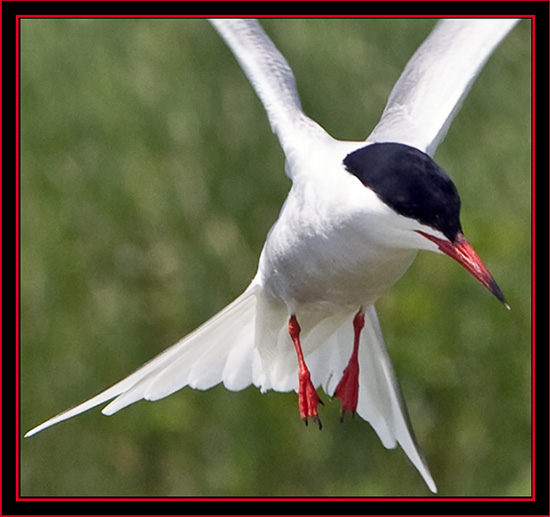
|
If you’ve been viewing the previous photographs you may be wondering where the images of birds in the air or on the wing may be. Hopefully you’ll agree that my experience in this endeavor is demonstrated in the following gallery…
Common Tern in Flight - Maine Coastal Islands National Wildlife RefugeCanon 5d, 1/800 second at 70mm; EF 70~200mm f/2.8L at f/10, ISO 800 |
Tern Flight Sampler...


|

|


|

|


|

|


|

|
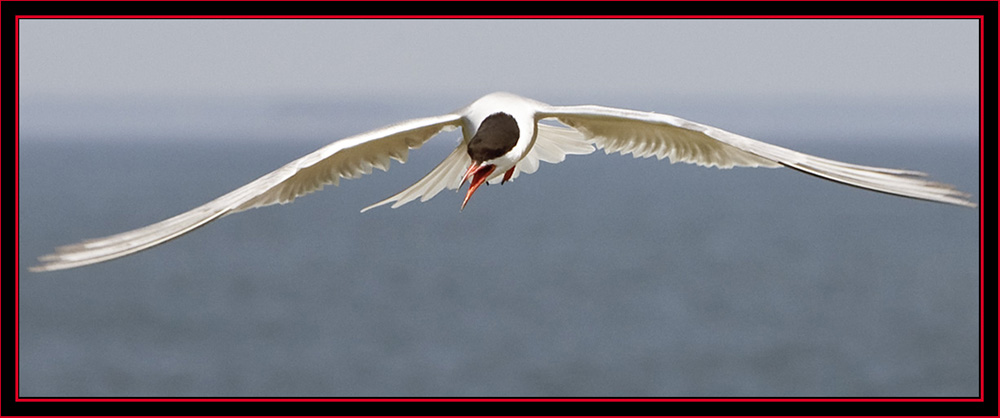
|
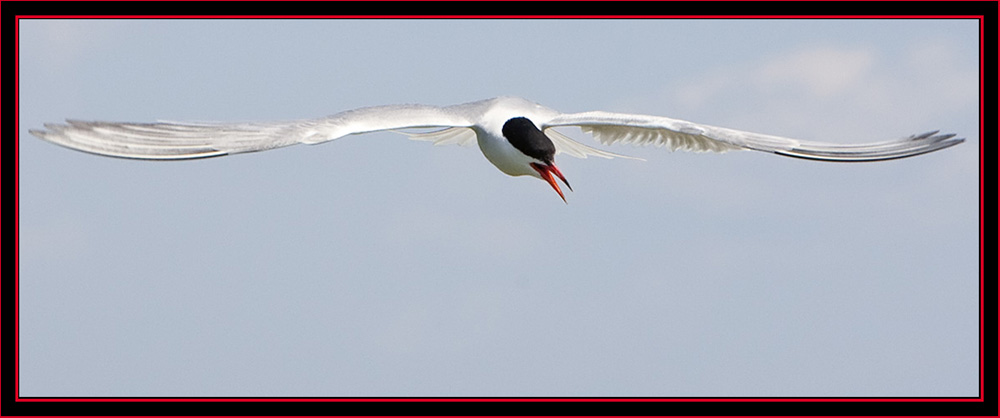
|
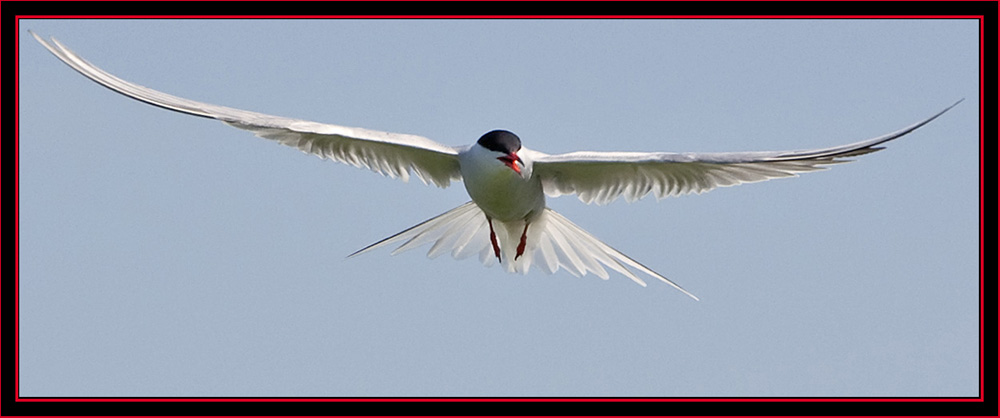
|
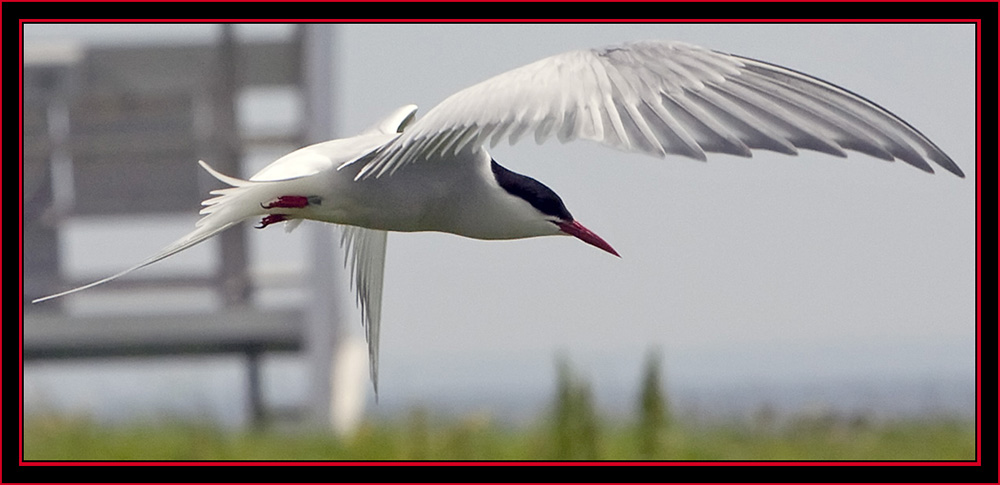
|
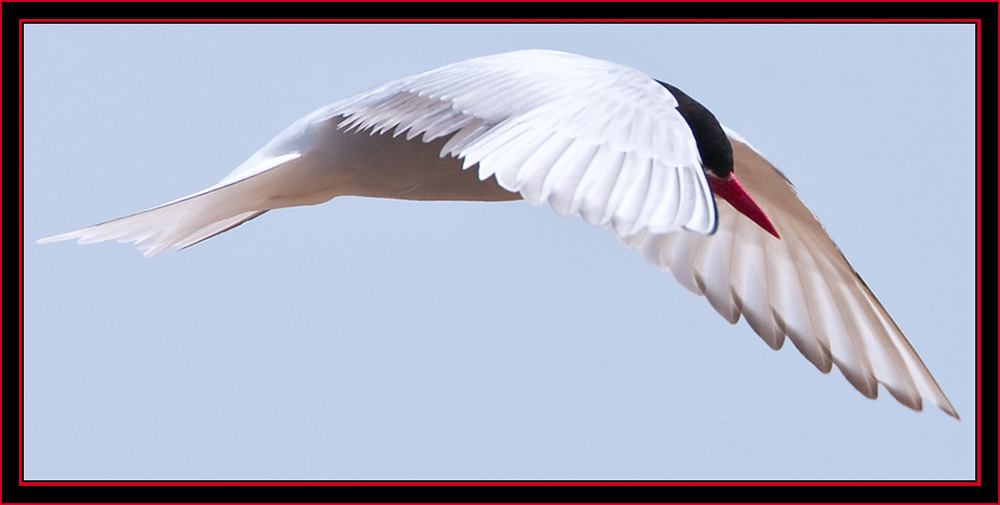
|
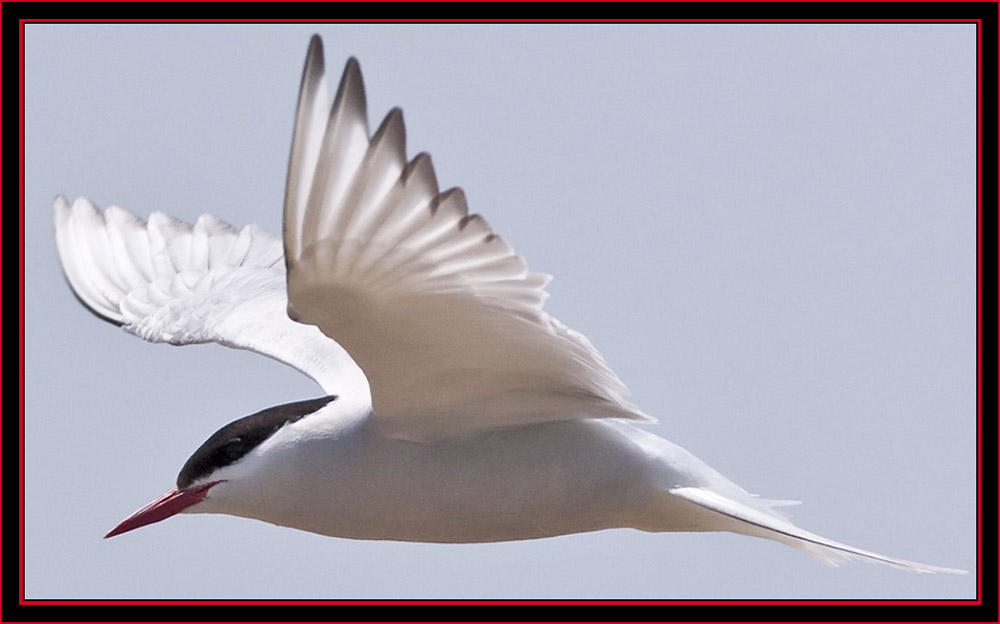
|
The flight images were taken with all three camera systems I had in the field with focal lengths ranging from 200 to 840 millimeters. The photographs
displayed in this article are a sampling of the overall effort… In the approximately five hours I was on the island I had just fewer than 1,100 exposures
in total. This was indeed a target rich environment and I wonder what ‘could have been’ if the trip would have been all day long or even an overnight junket…
Common Tern Flight Image - Maine Coastal Islands National Wildlife RefugeCanon EOS 1Ds Mark III, 1/1600 second at 200mm; EF 70~200mm f/2.8L at f/9, ISO 640 |
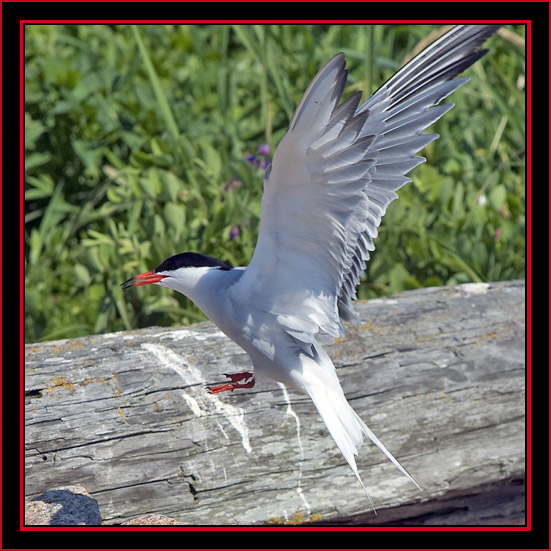
|
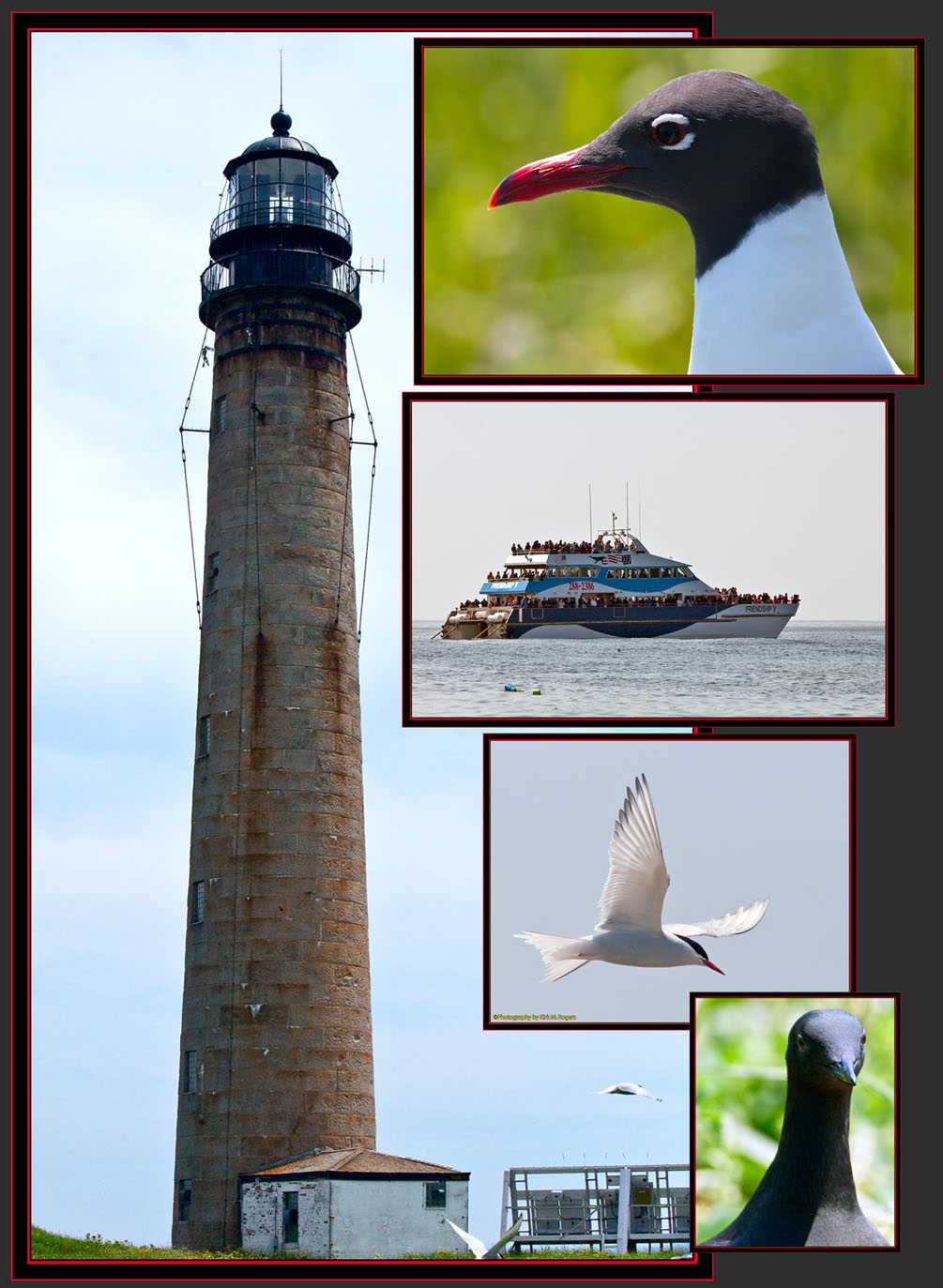
|

|
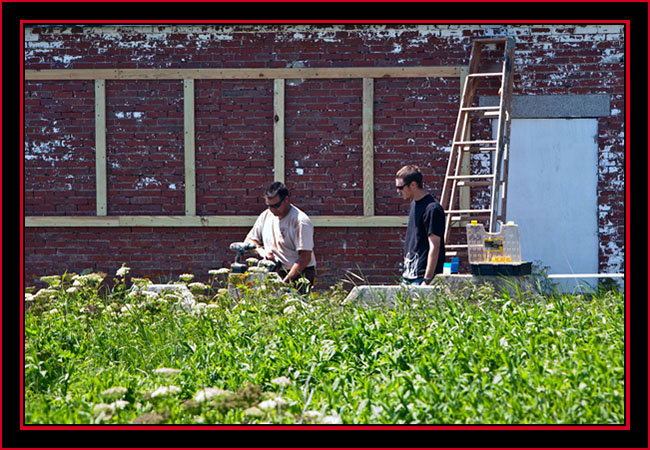
|
Linda radioed that the time had come to leave the blind and make preparations for the return to Milbridge. Nearly the entire time I was photographing the
birds, Jim had been mounting a sign on one of the buildings that could be viewed from seaward. On the way back we intended to photograph this sign for record as
well as features on some refuge islands for Linda's use. Due to the tide schedule the boat had to be pulled no later than 1500 hours. In the end result
I held up the departure. Not because I was dallying or didn’t get out of the blind promptly, it took me longer than anticipated to break down and re-pack my
equipment. We didn’t have time to stop by the islands as planned due to the delay – guess I’ll have to get back soon...
Mounting the Sign - Maine Coastal Islands National Wildlife RefugeCanon 5d, 1/320 second at 70mm; EF 70~200mm f/2.8L at f/8, ISO 800 |
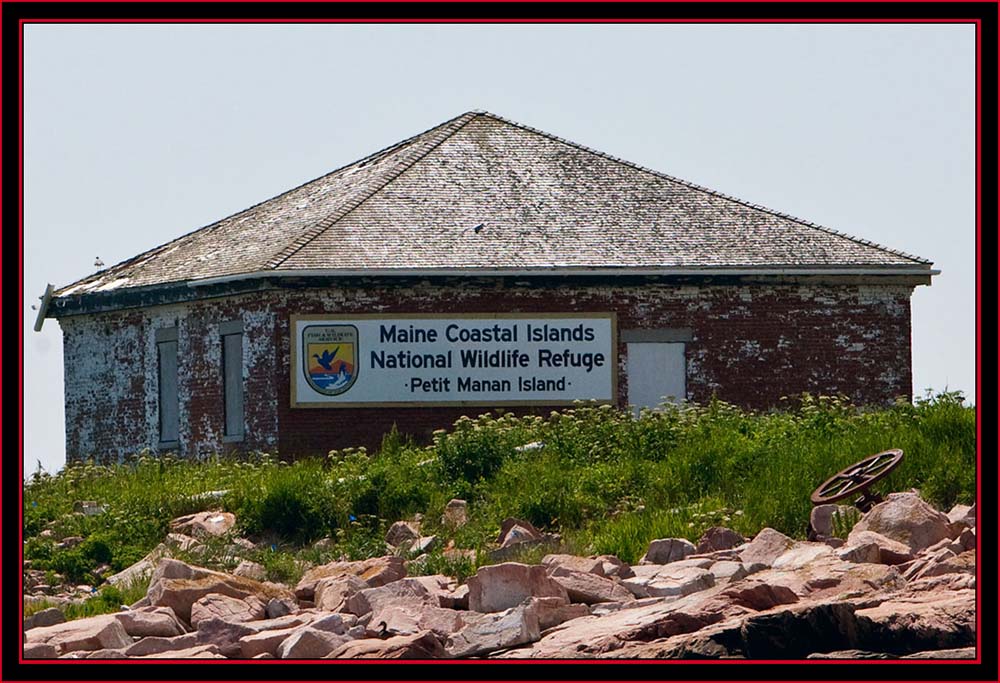
|
The gear was transported via inflatable and those of us returning to the mainland were soon all aboard. After a quick detour to photographic the sign, Jim
jetted us back on the return. It had been a good day and although I had four hours on the road before returning home, I was looking forward to downloading
and inspecting the shoot files. I felt satisfied that I’d made the best of the opportunity Linda had presented…
Tern With Catch - Maine Coastal Islands National Wildlife RefugeCanon EOS 1Ds Mark III, 1/2000 second at 840mm; EF 600mm f/4L + 1.4X at f/8, ISO 640 |
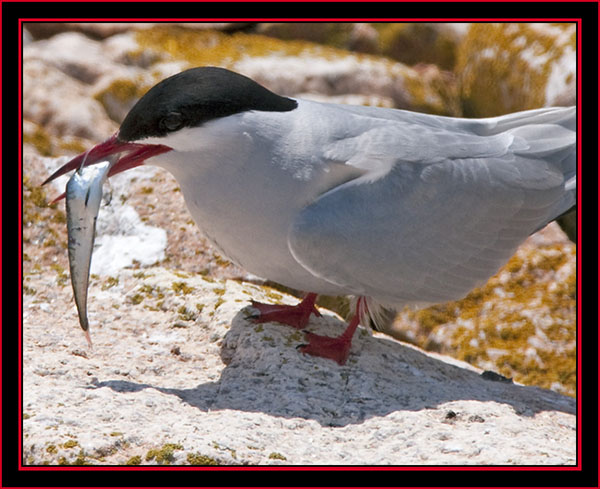
|
Returning Views...
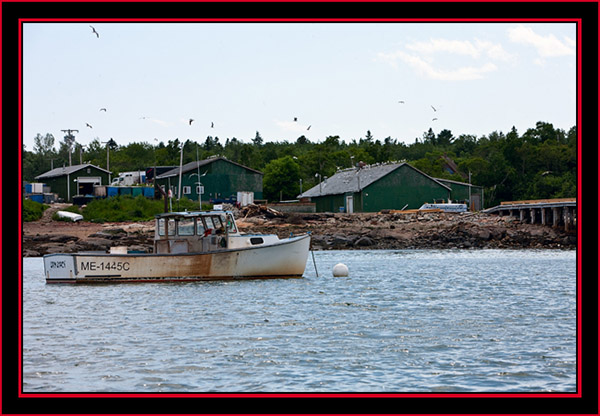
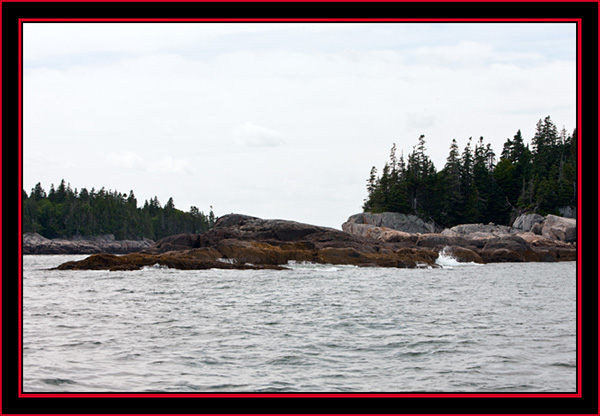
|
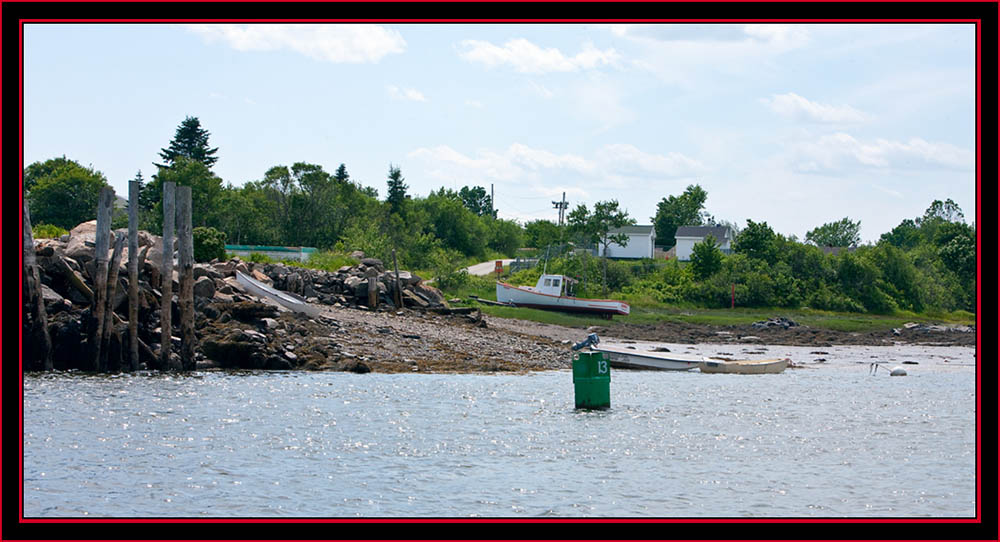
|
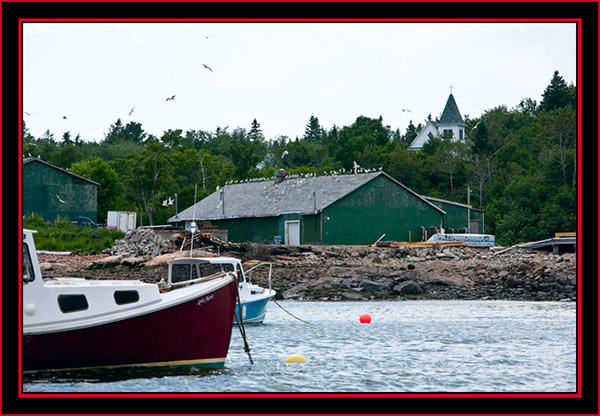
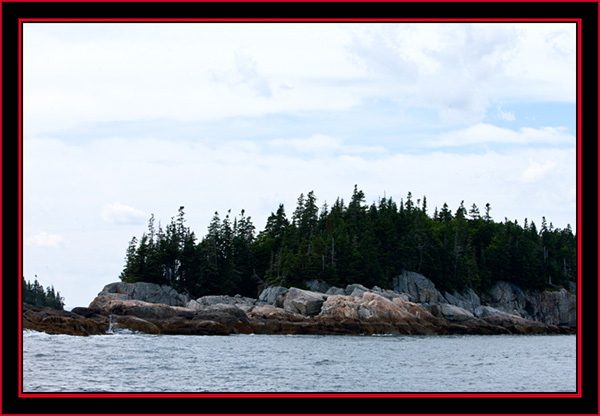
|
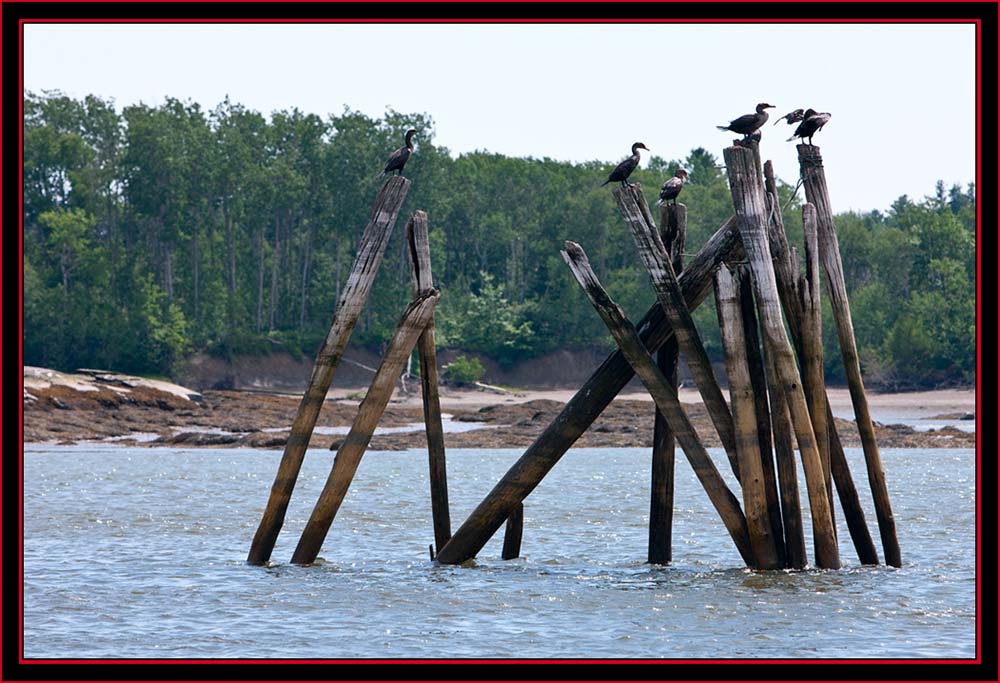
|
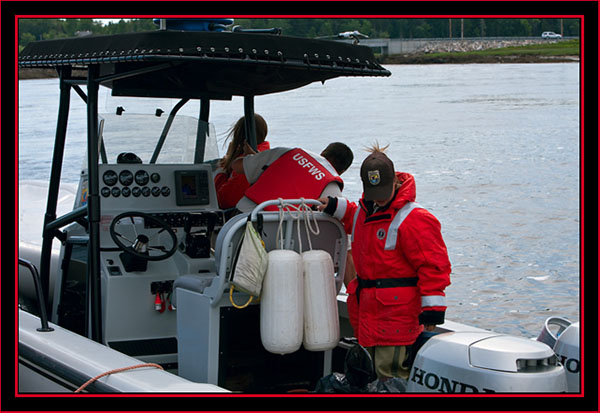
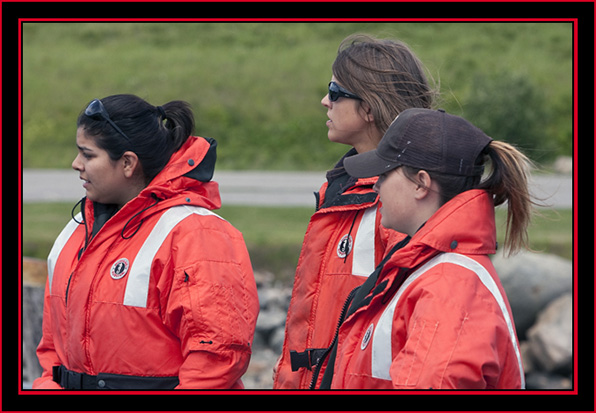
|
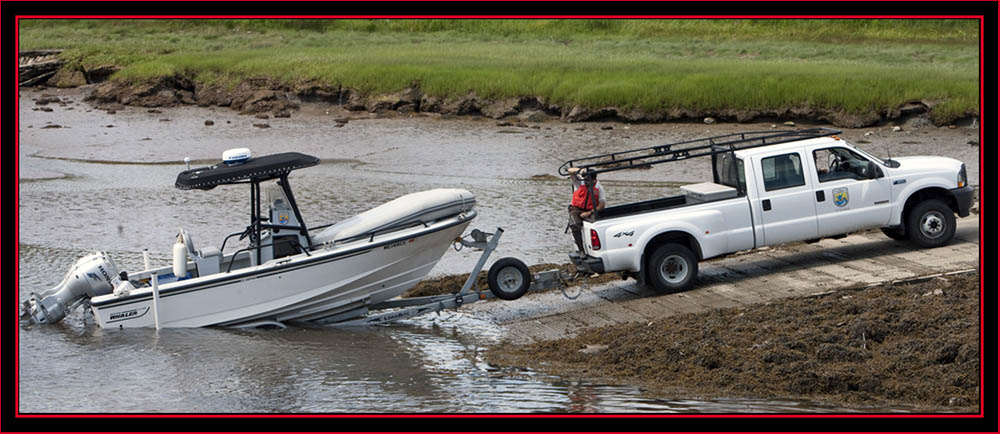
|
The Aftermath...
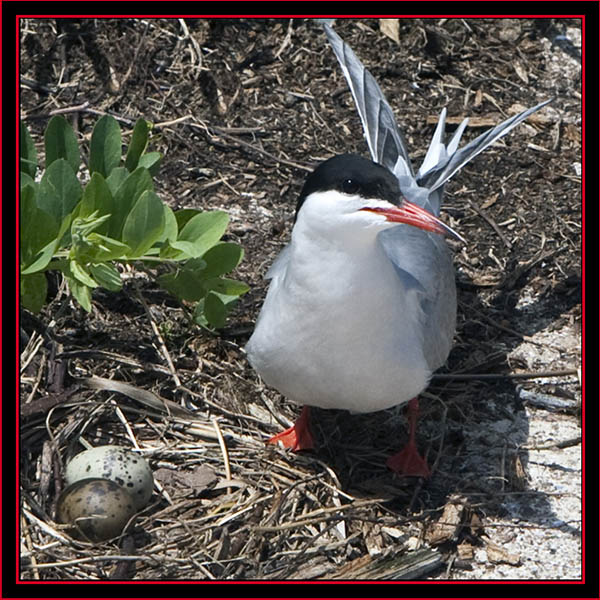
|
When I got back to Portland I had the weekend ahead before returning to my office. I kissed my Linda, unpacked my gear and disappeared into my digital lab. Working on the image
files whenever I had a spare minute, I started a print run from my day on the island. From my office on Monday I sent a tube via Federal Express to Linda in Milbridge, which she
received the next day, consisting of the enhanced jpgs and a print group… I really did appreciate this opportunity and thank Linda, Jim and the U.S. Fish & Wildlife Service for
making it possible…
Several seabird species categories were revised on my Bird Photography Index from this trip. The Arctic & Roseate Terns were new uploads. However, the Common Tern and Black Guillemot shots were so far superior to what I had posted I completely reworked both galleries. Should anyone have an interest the following links are offered for perusal: Common Tern; Arctic Tern; Roseate Tern and Black Guillemot. |
|
|